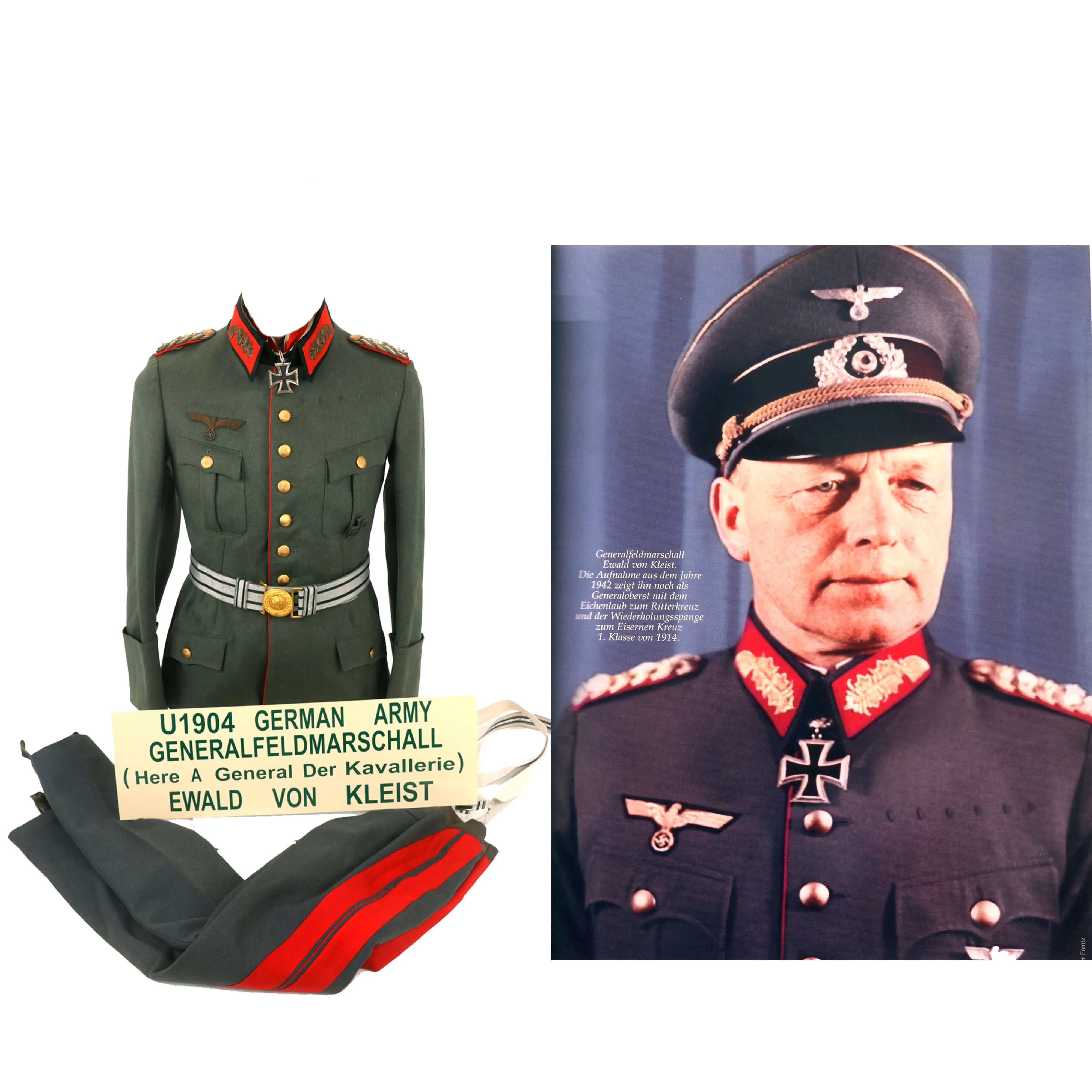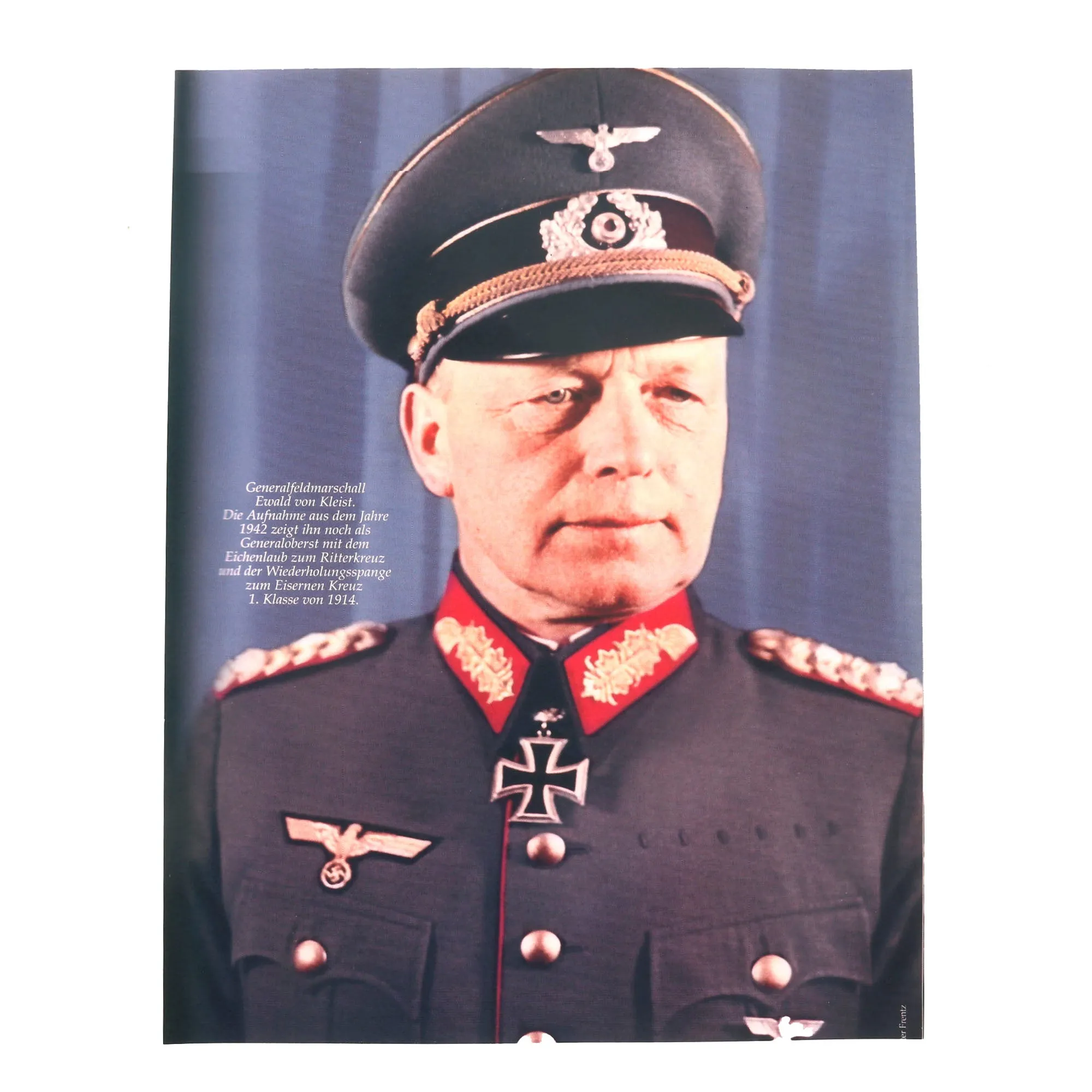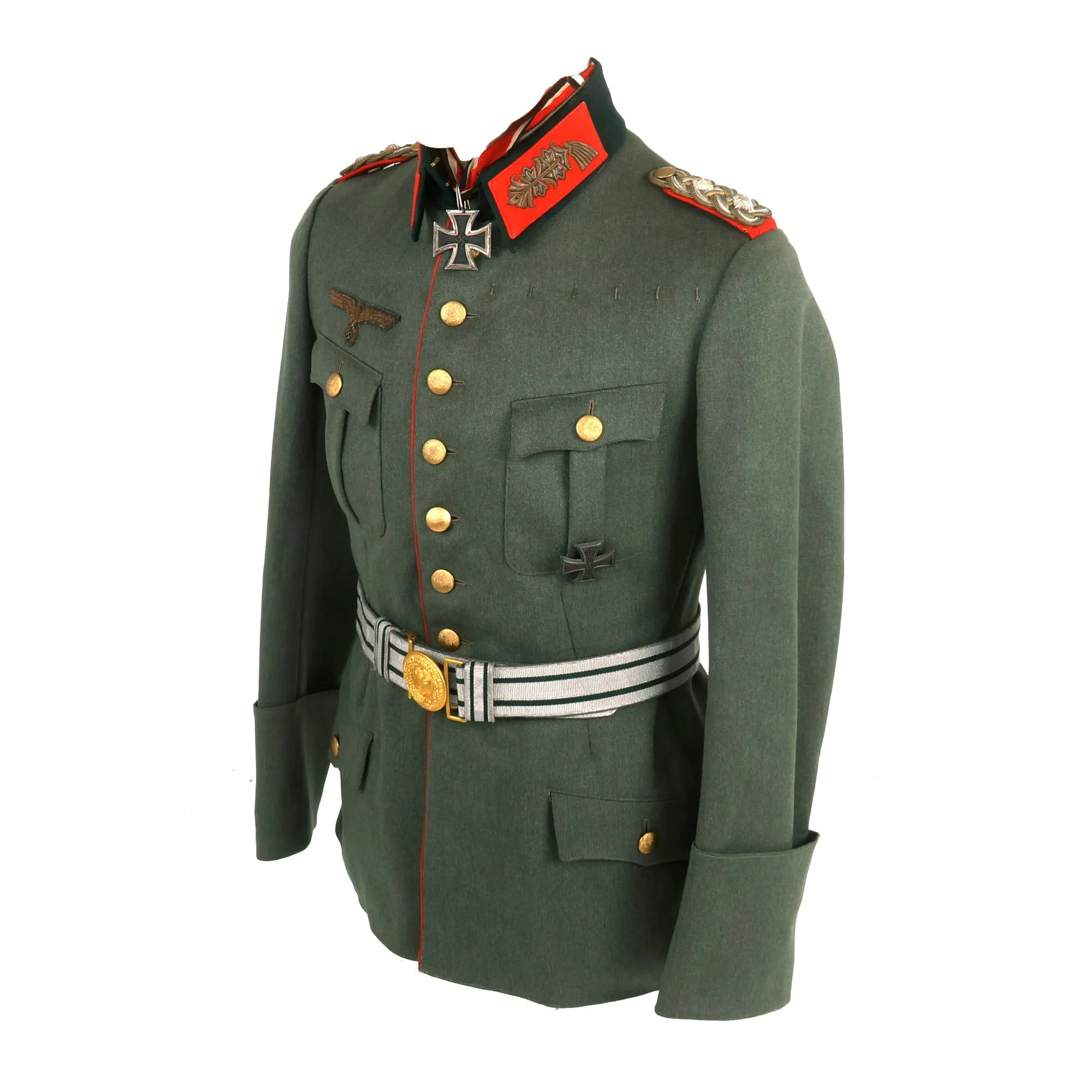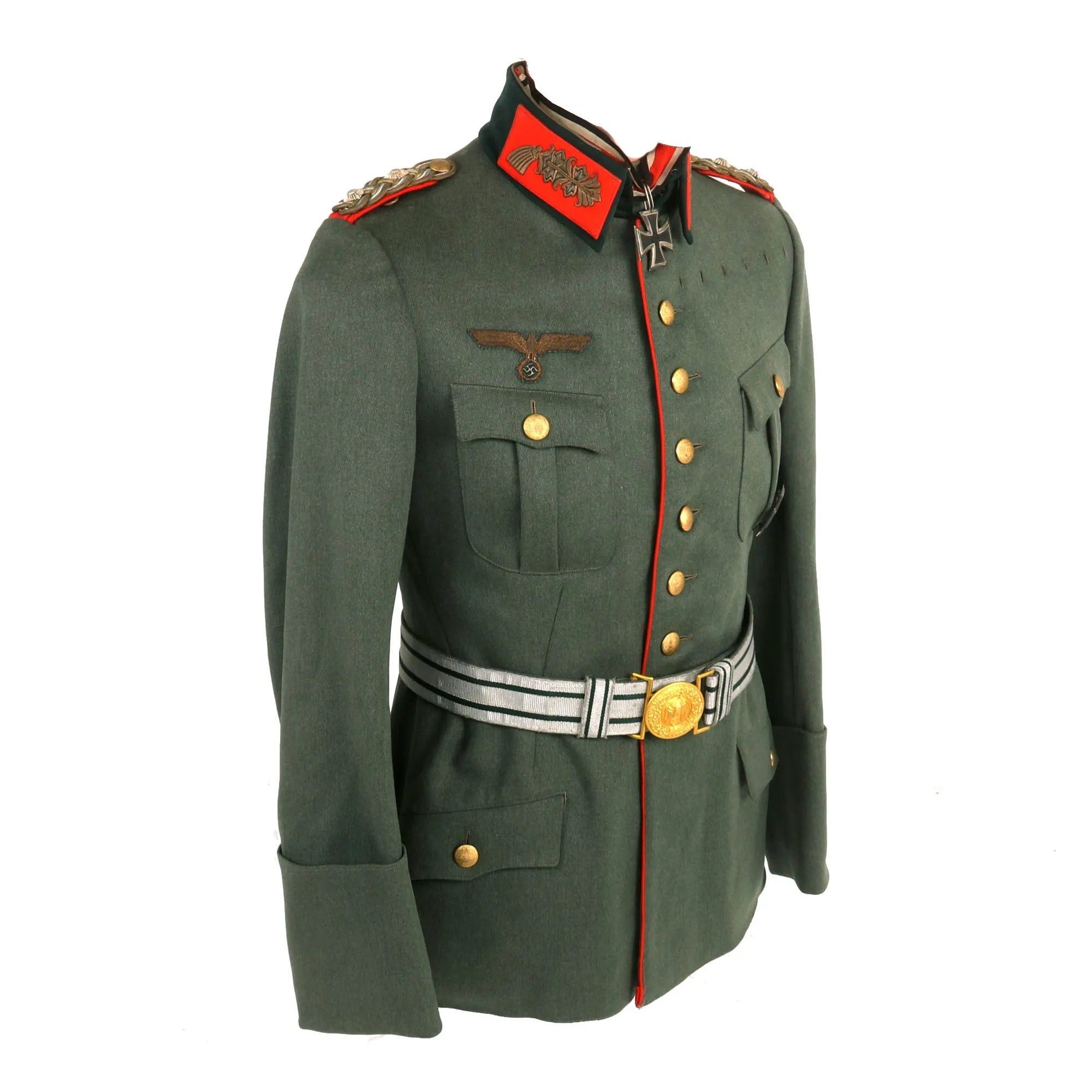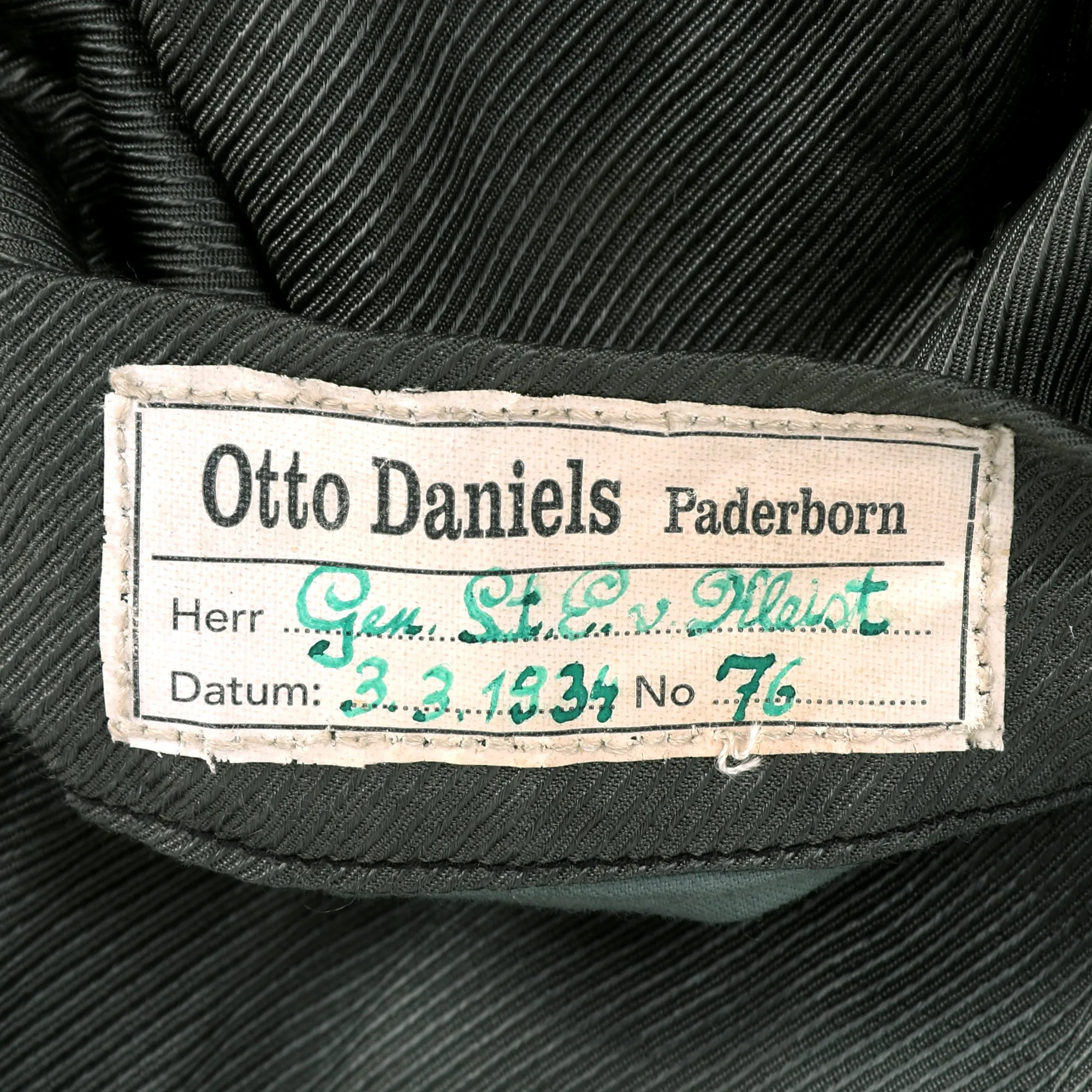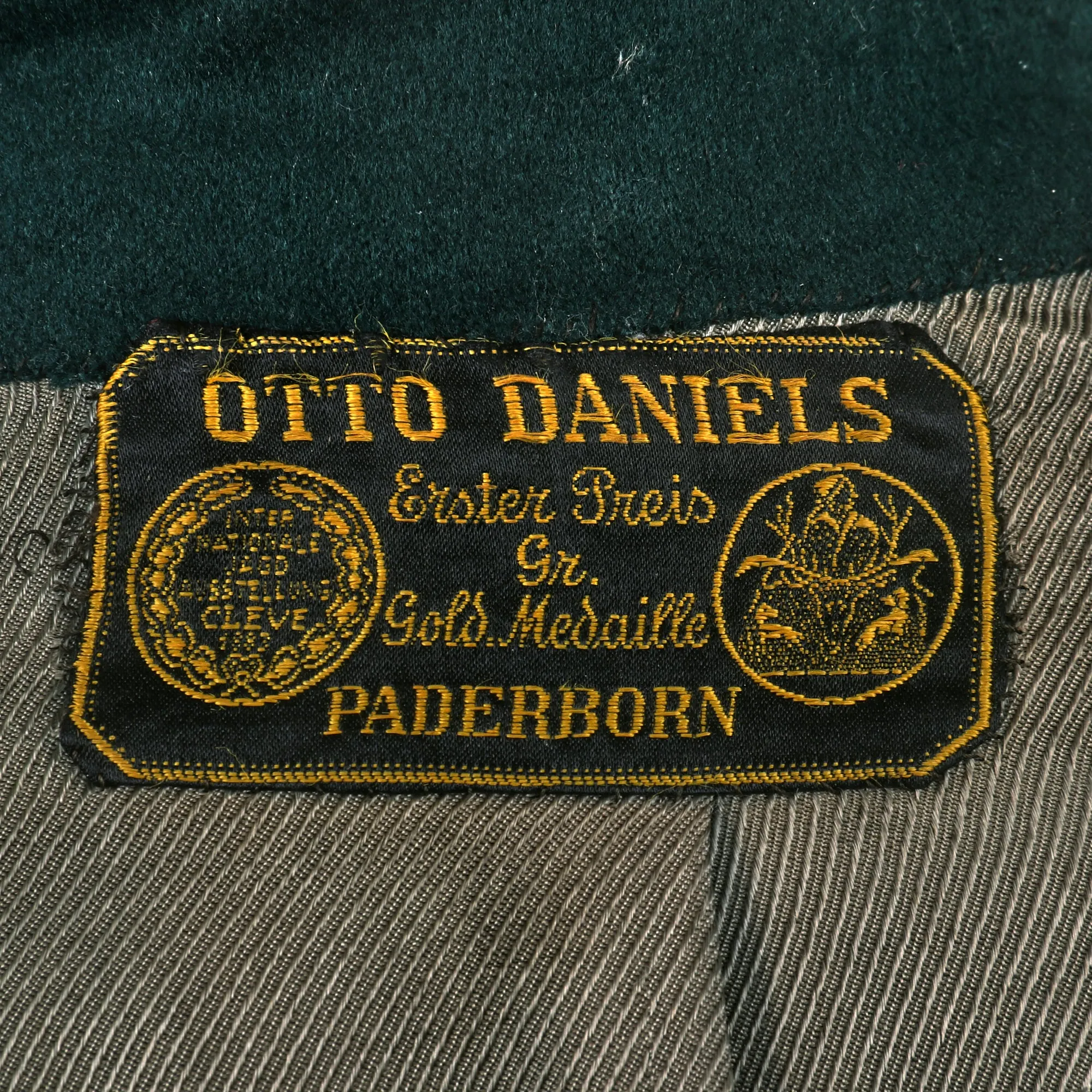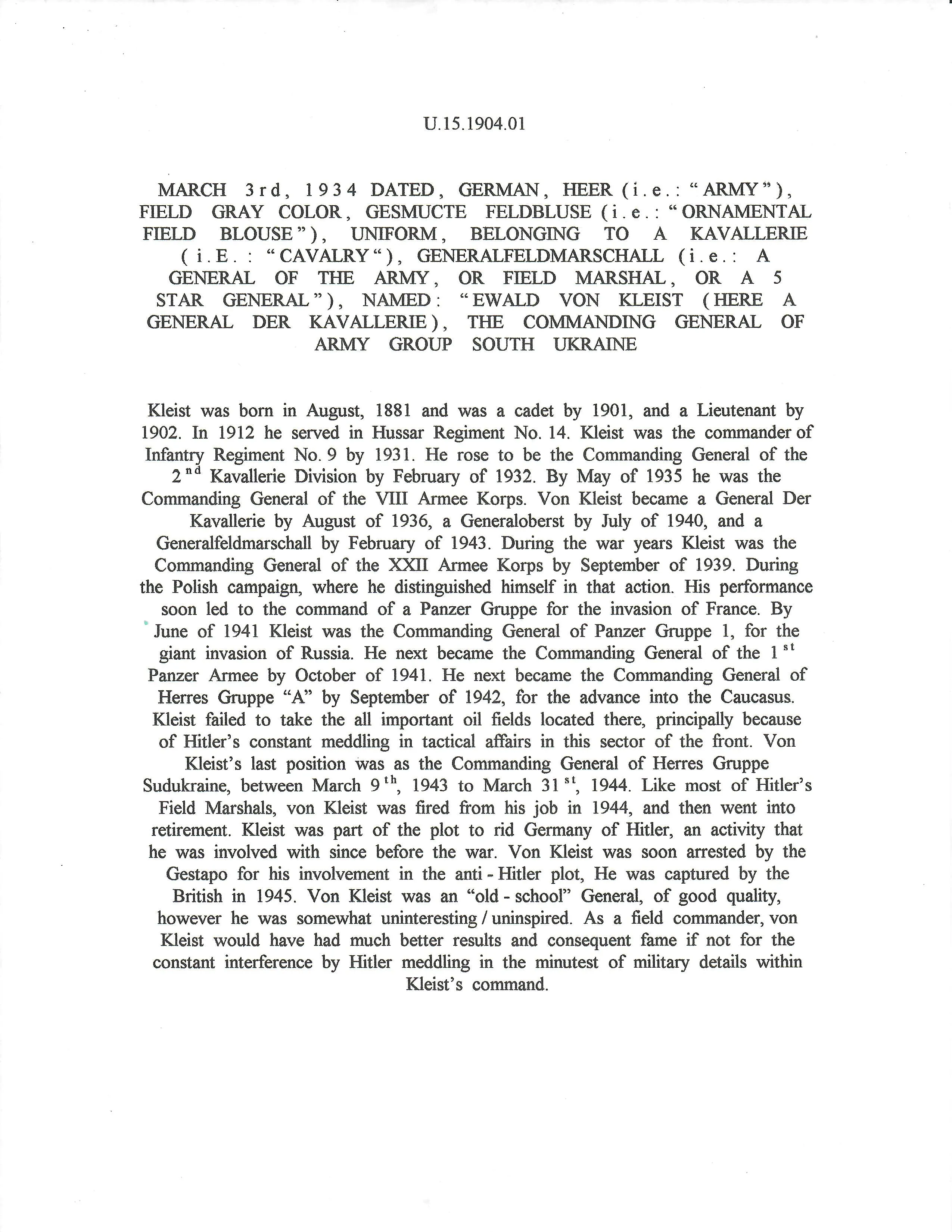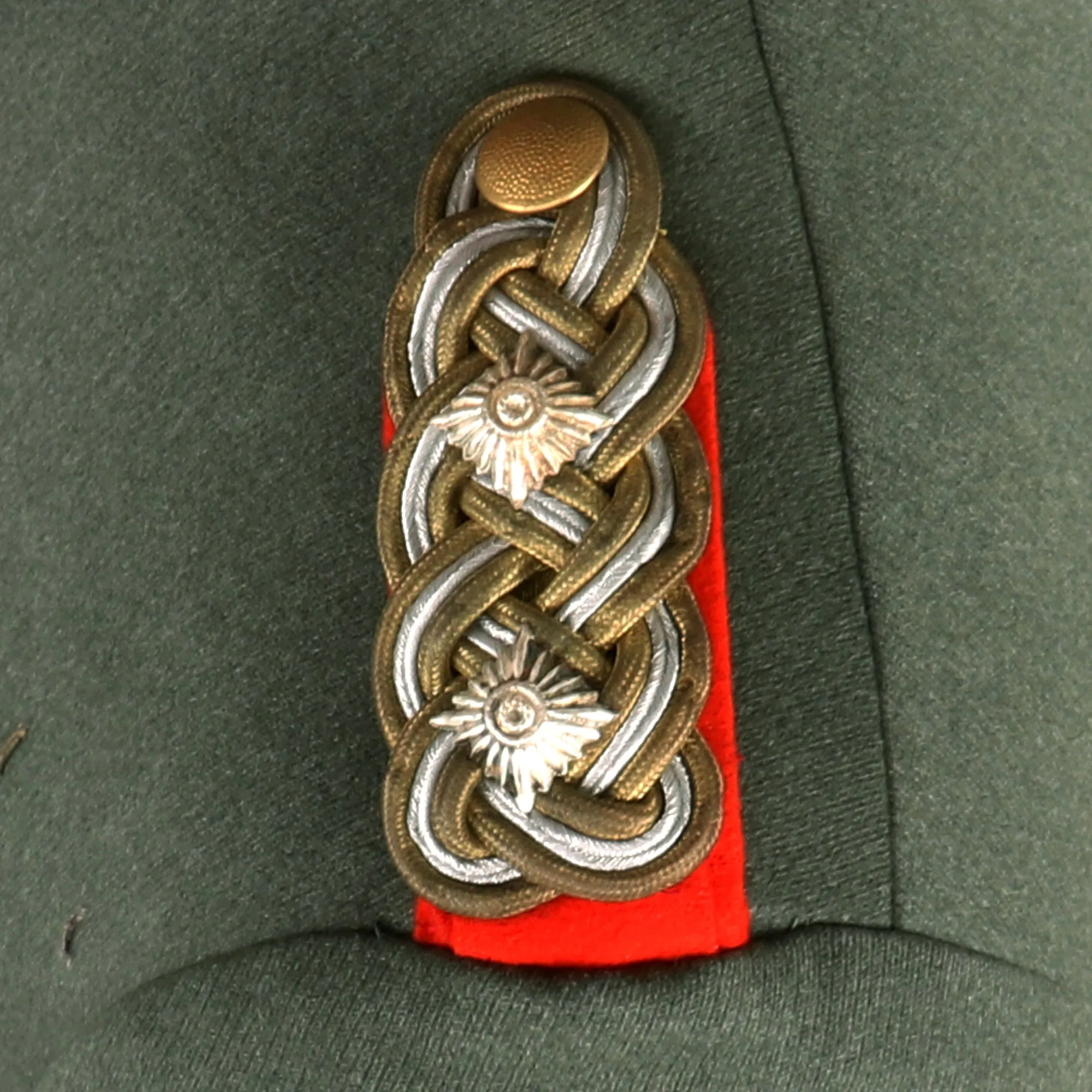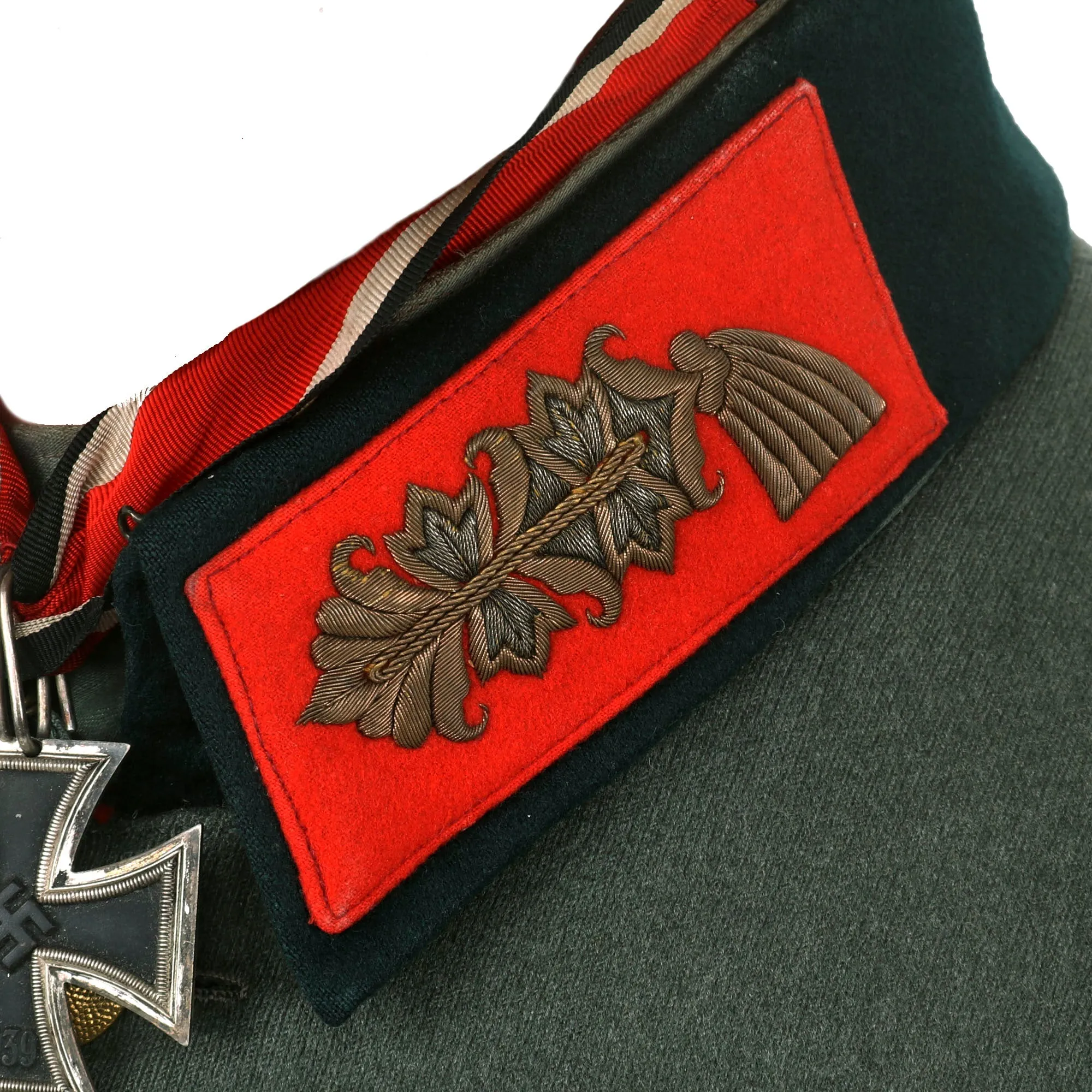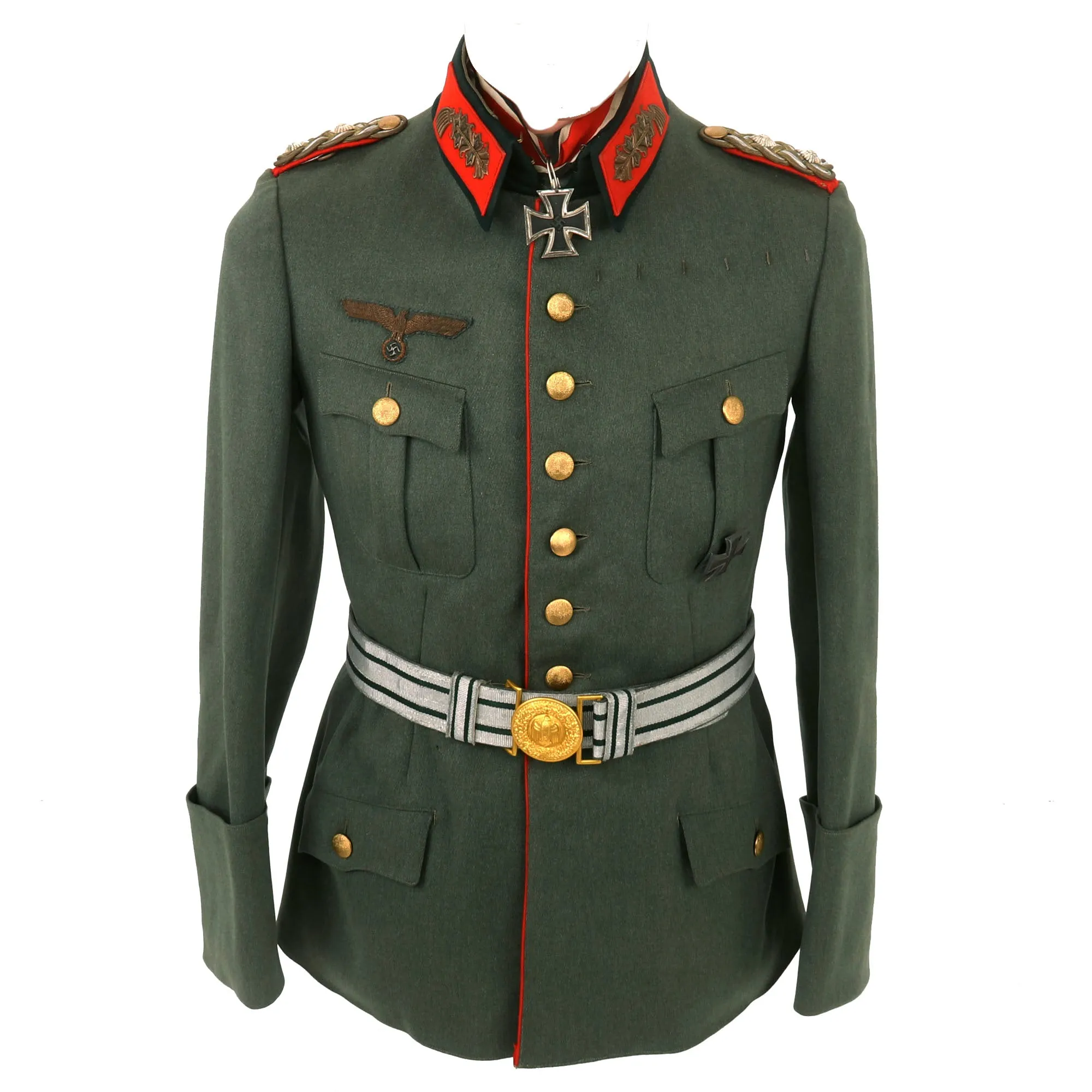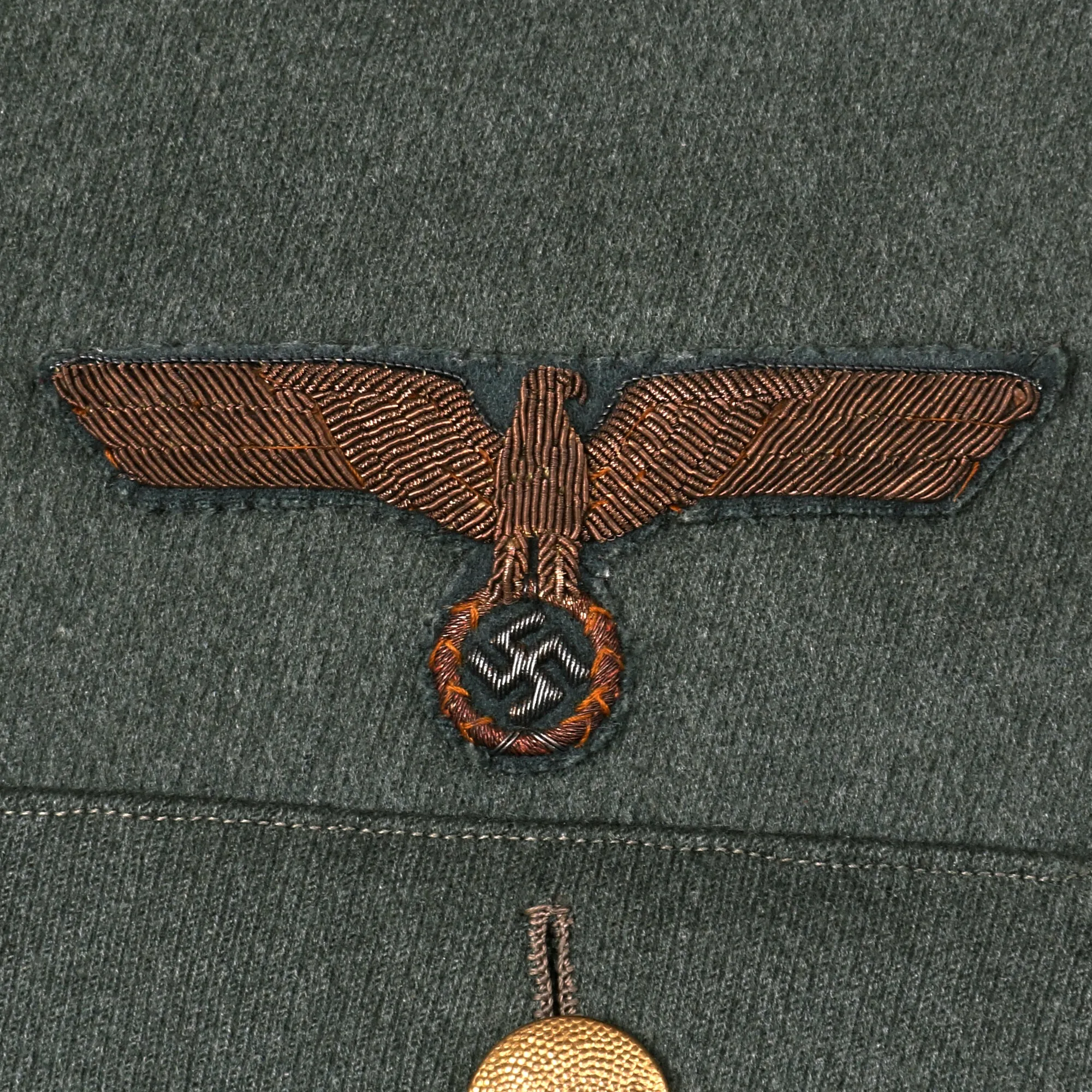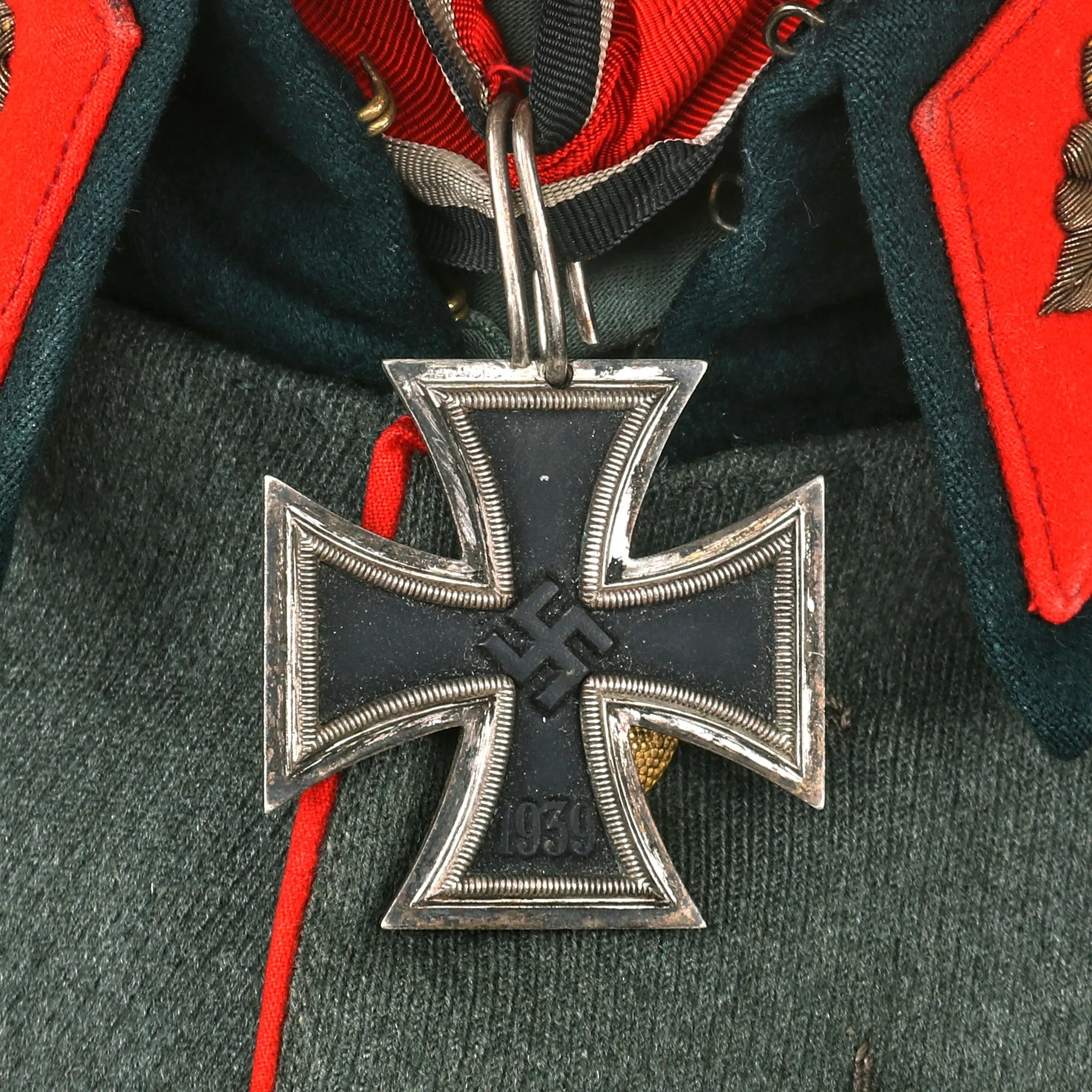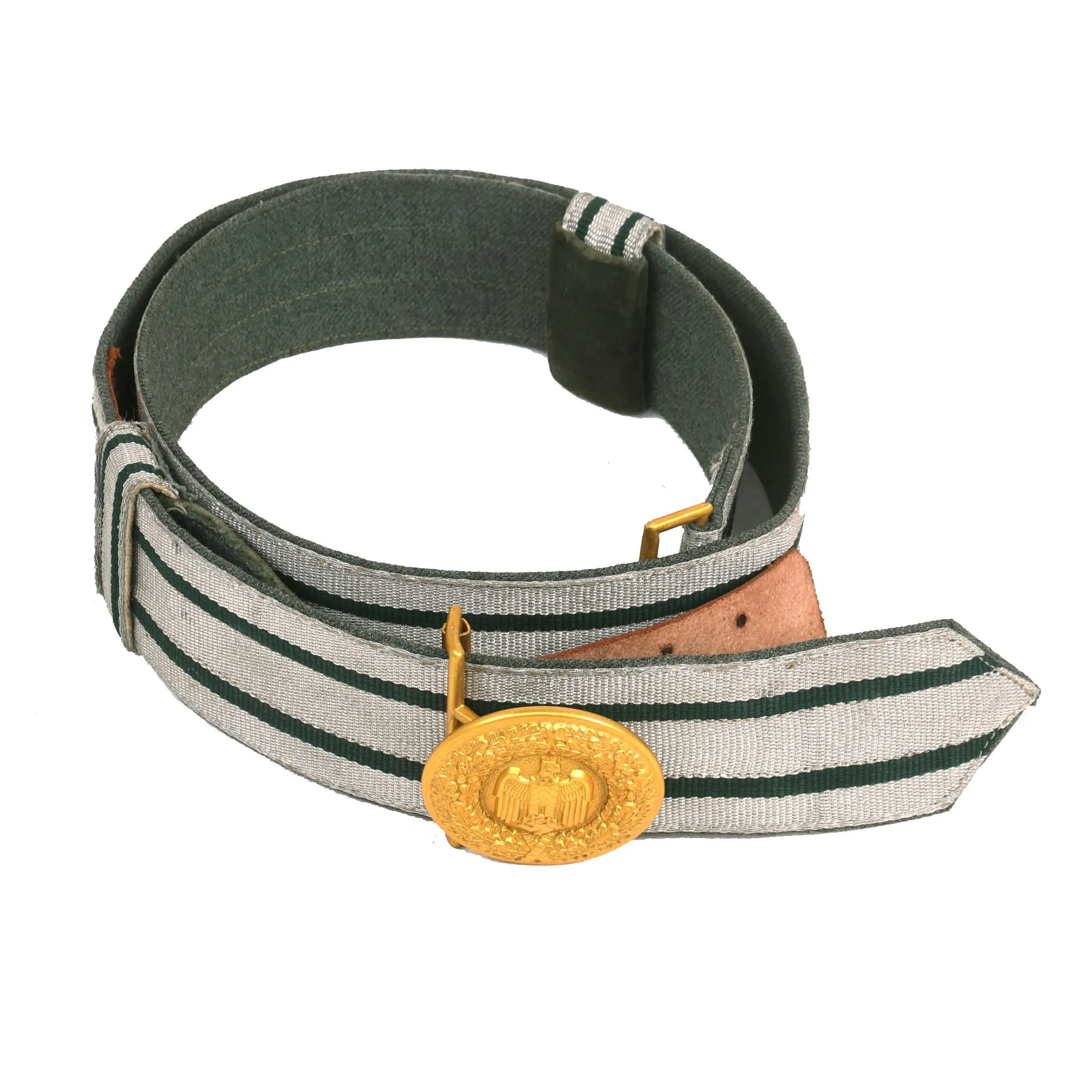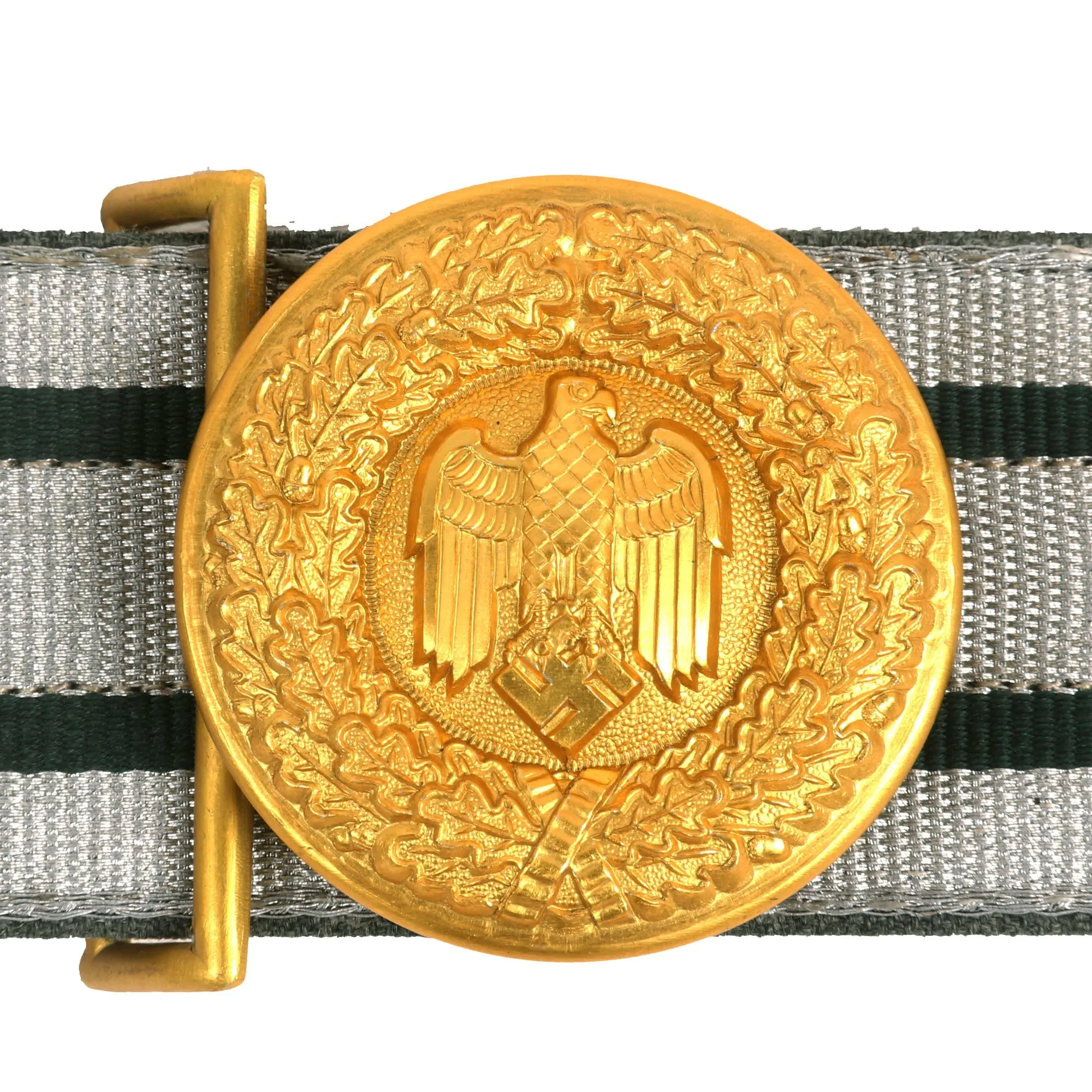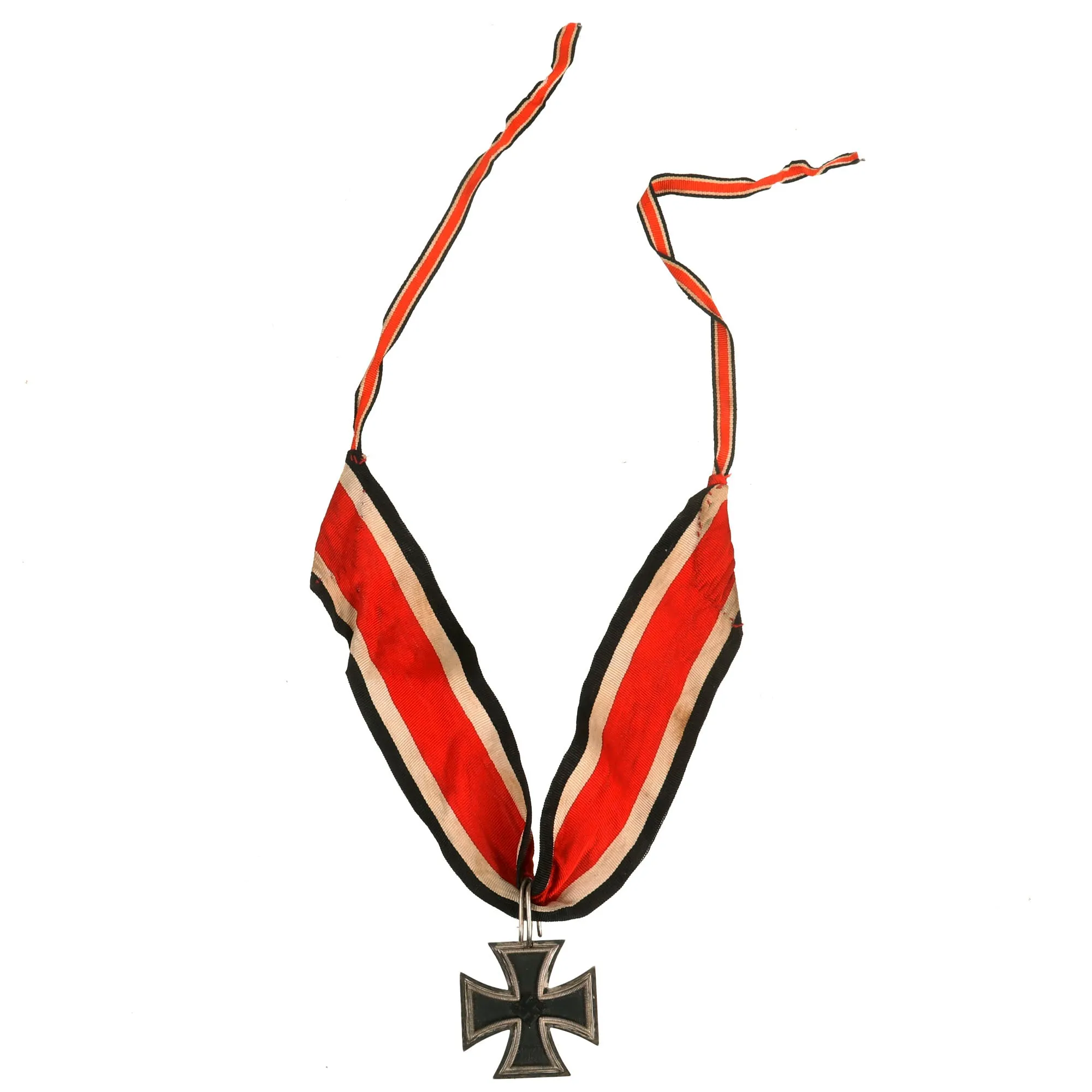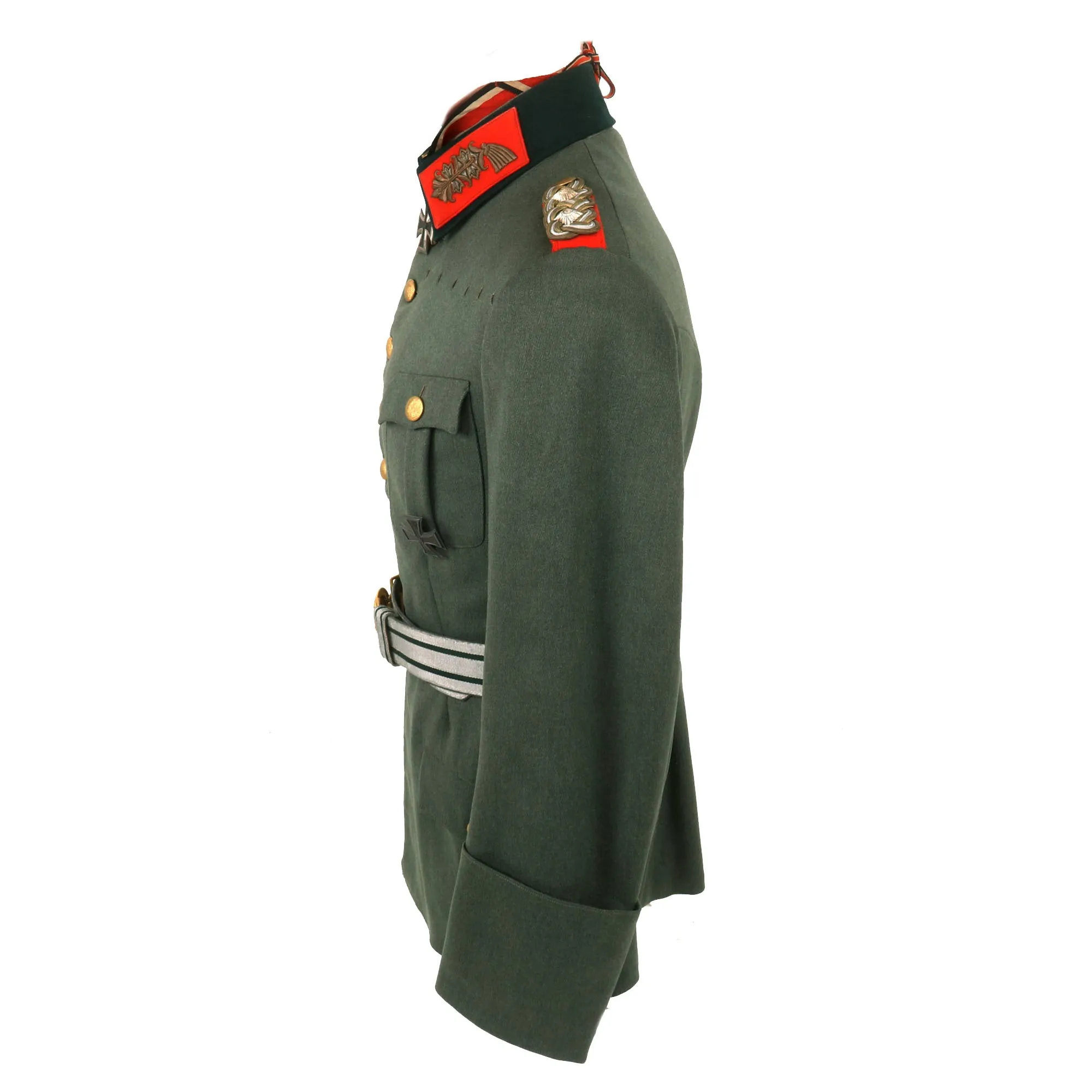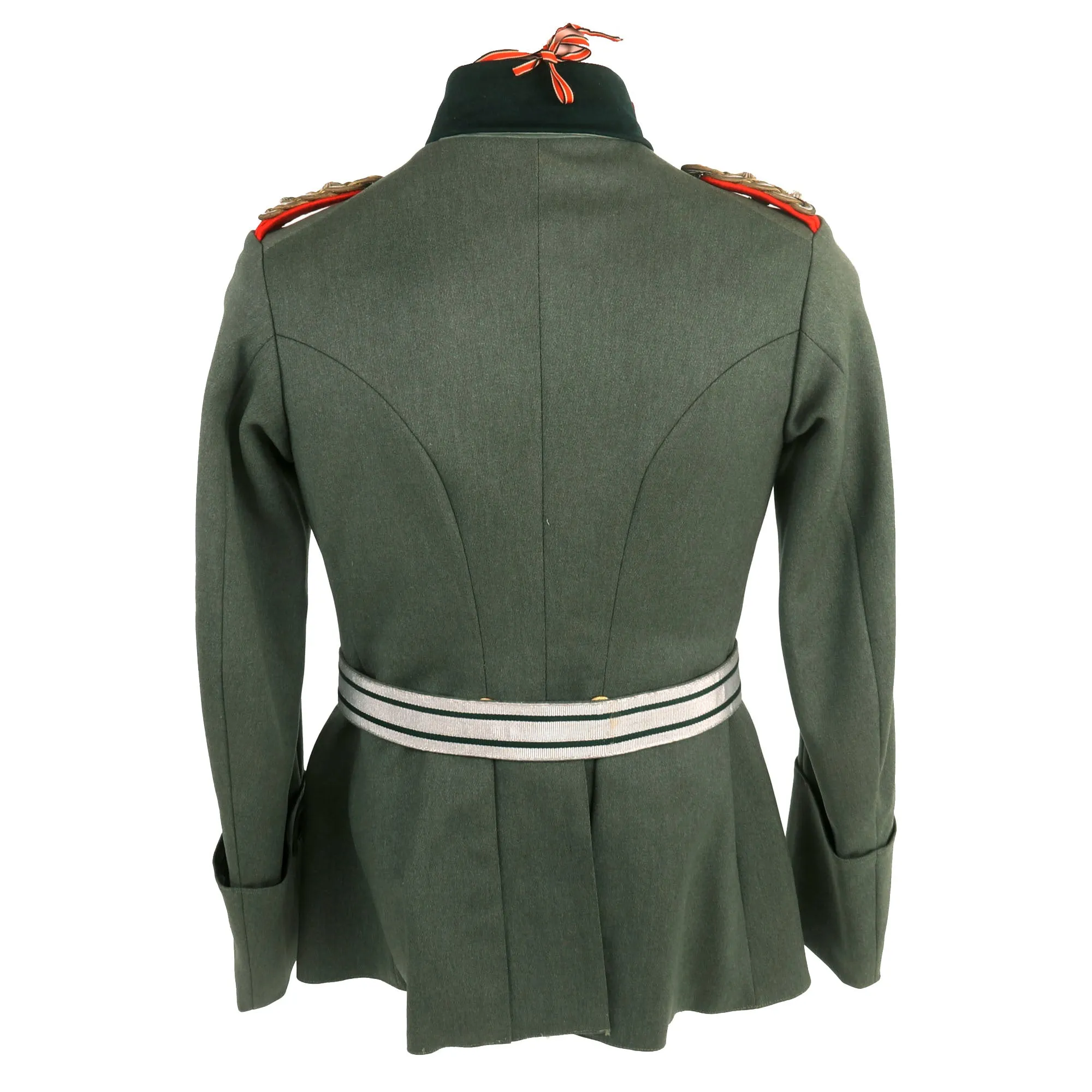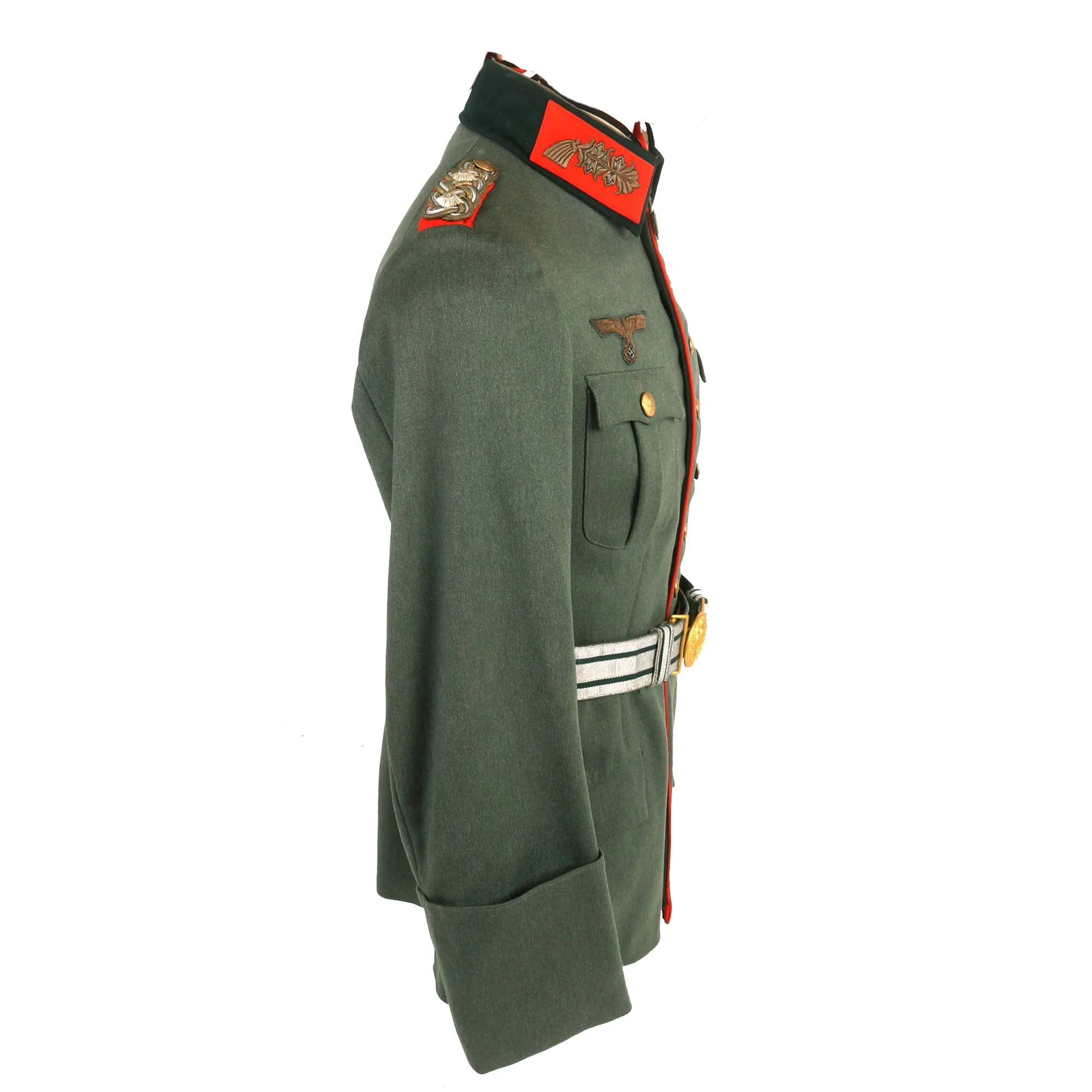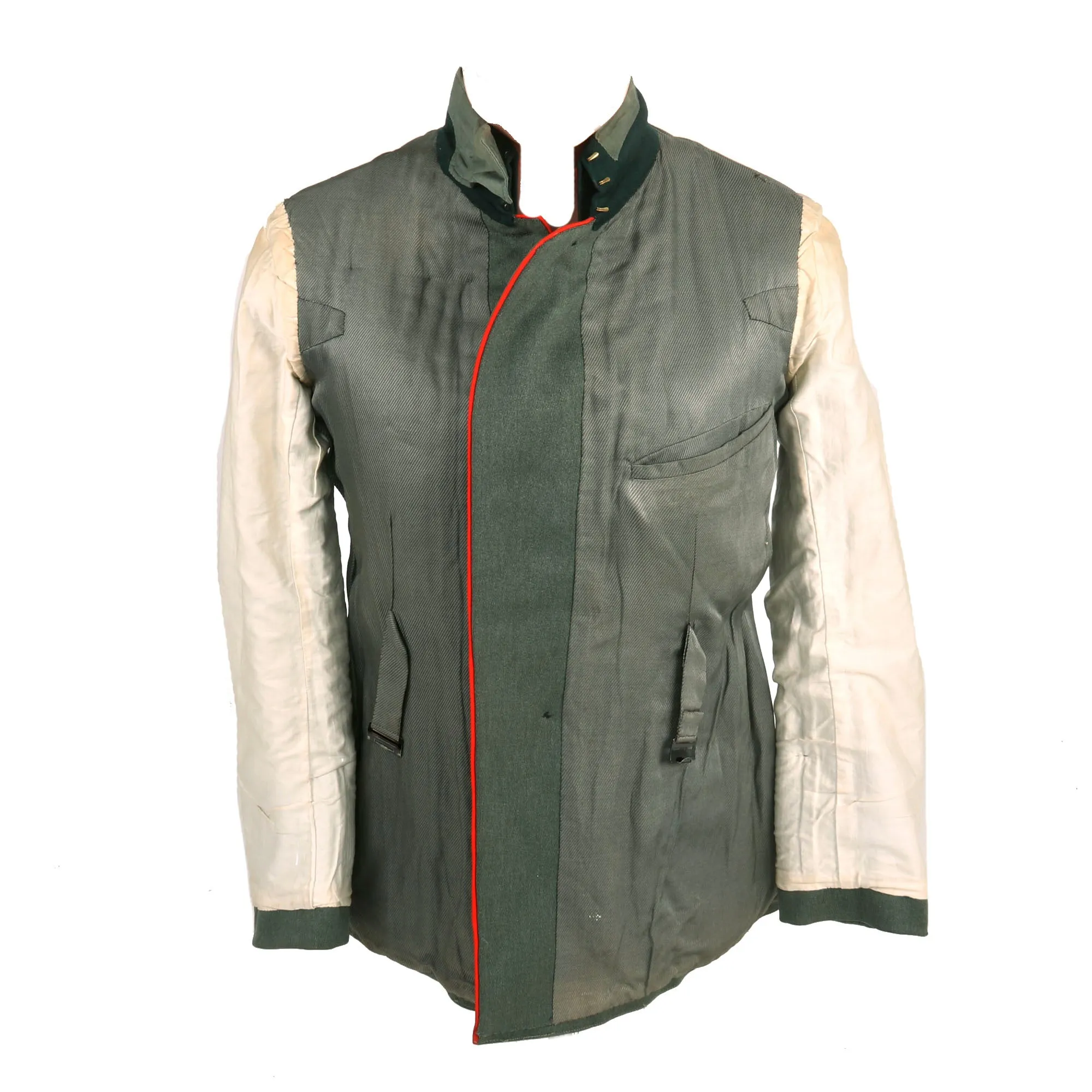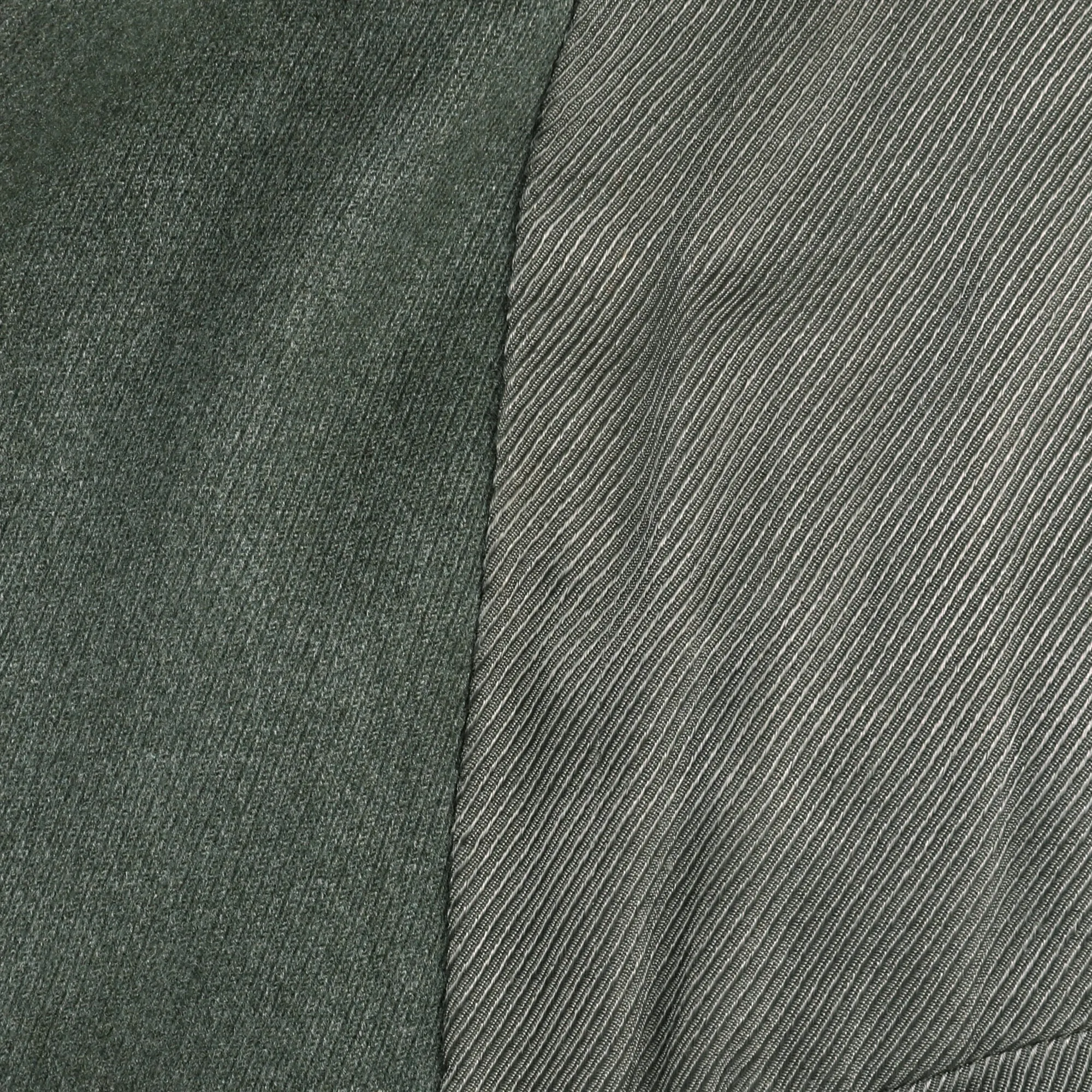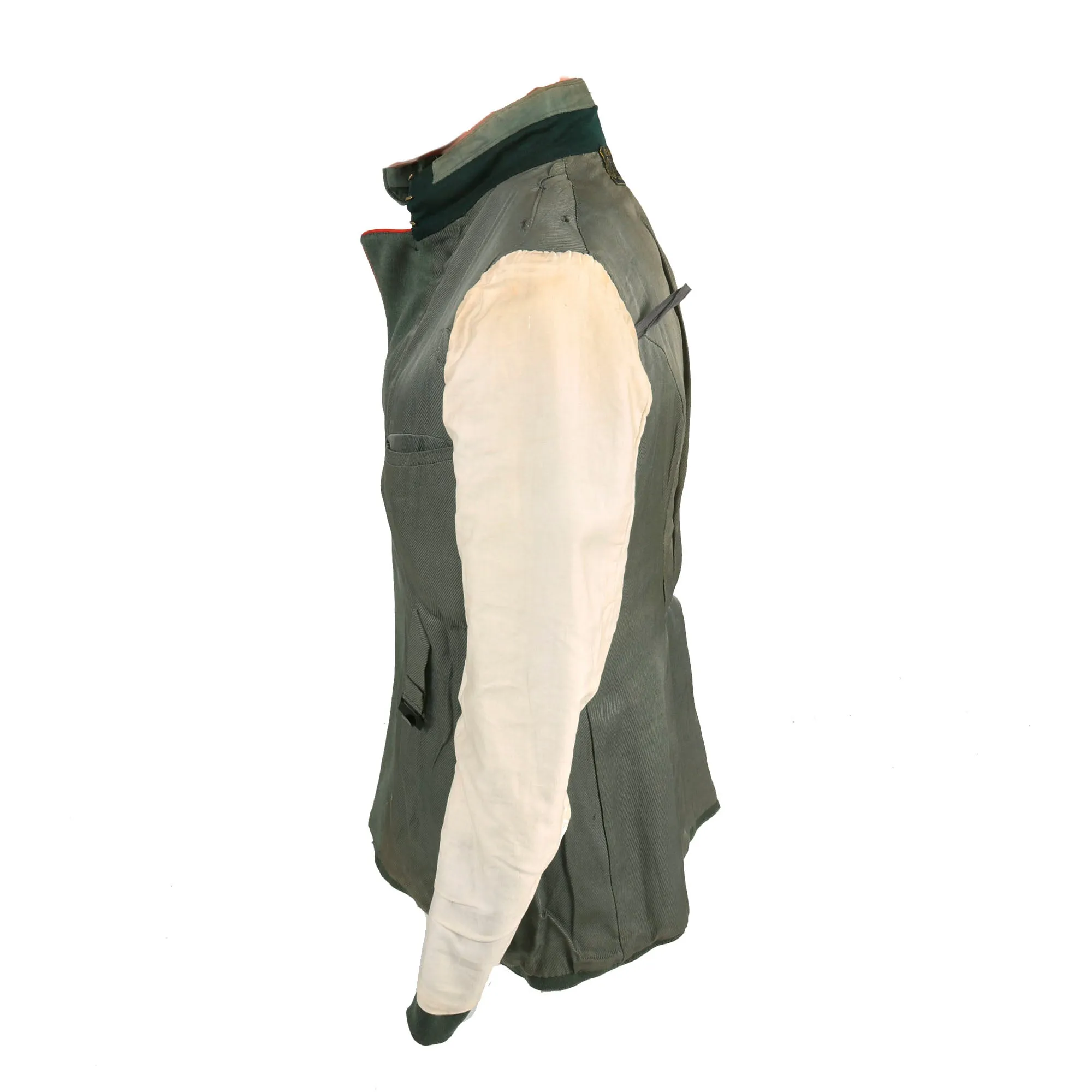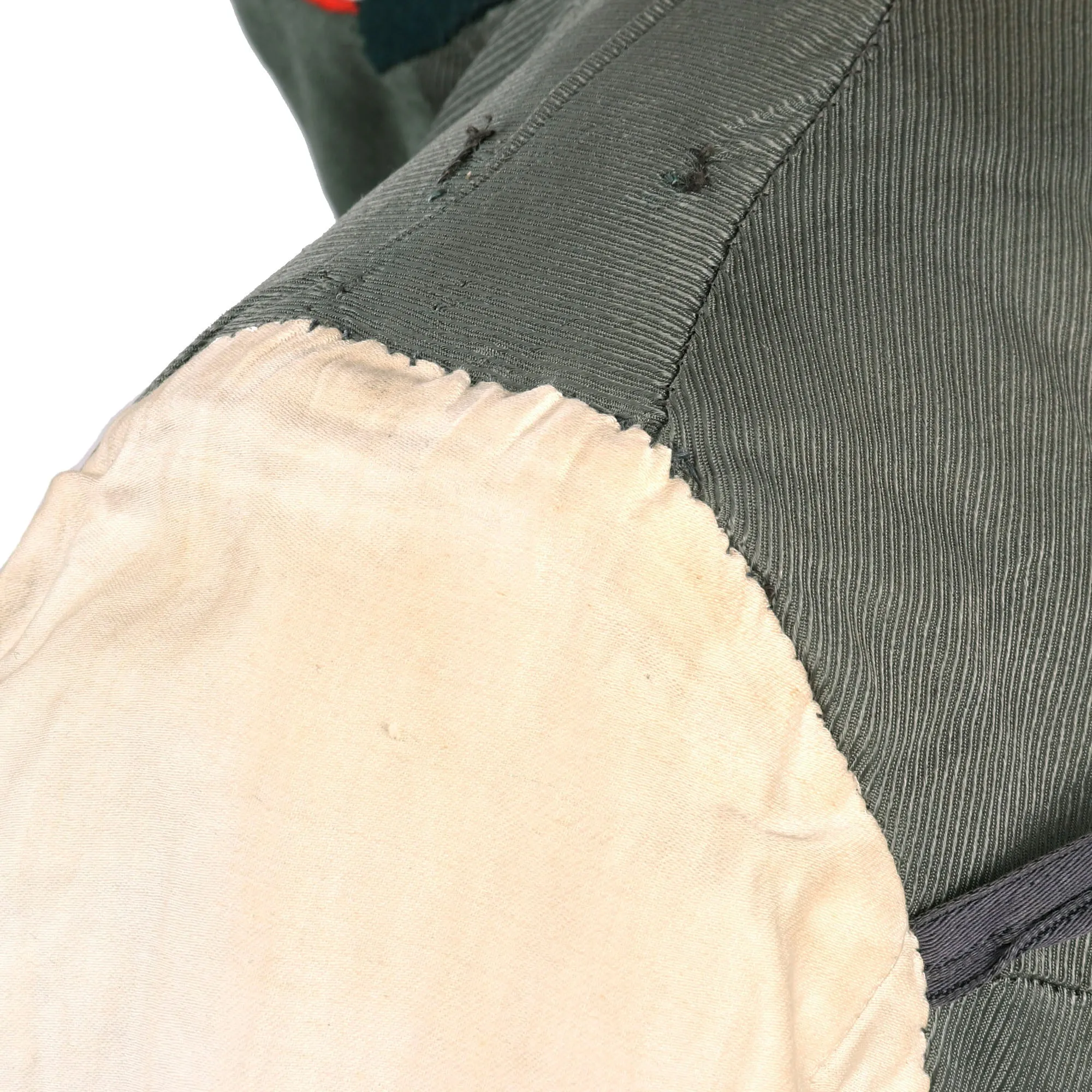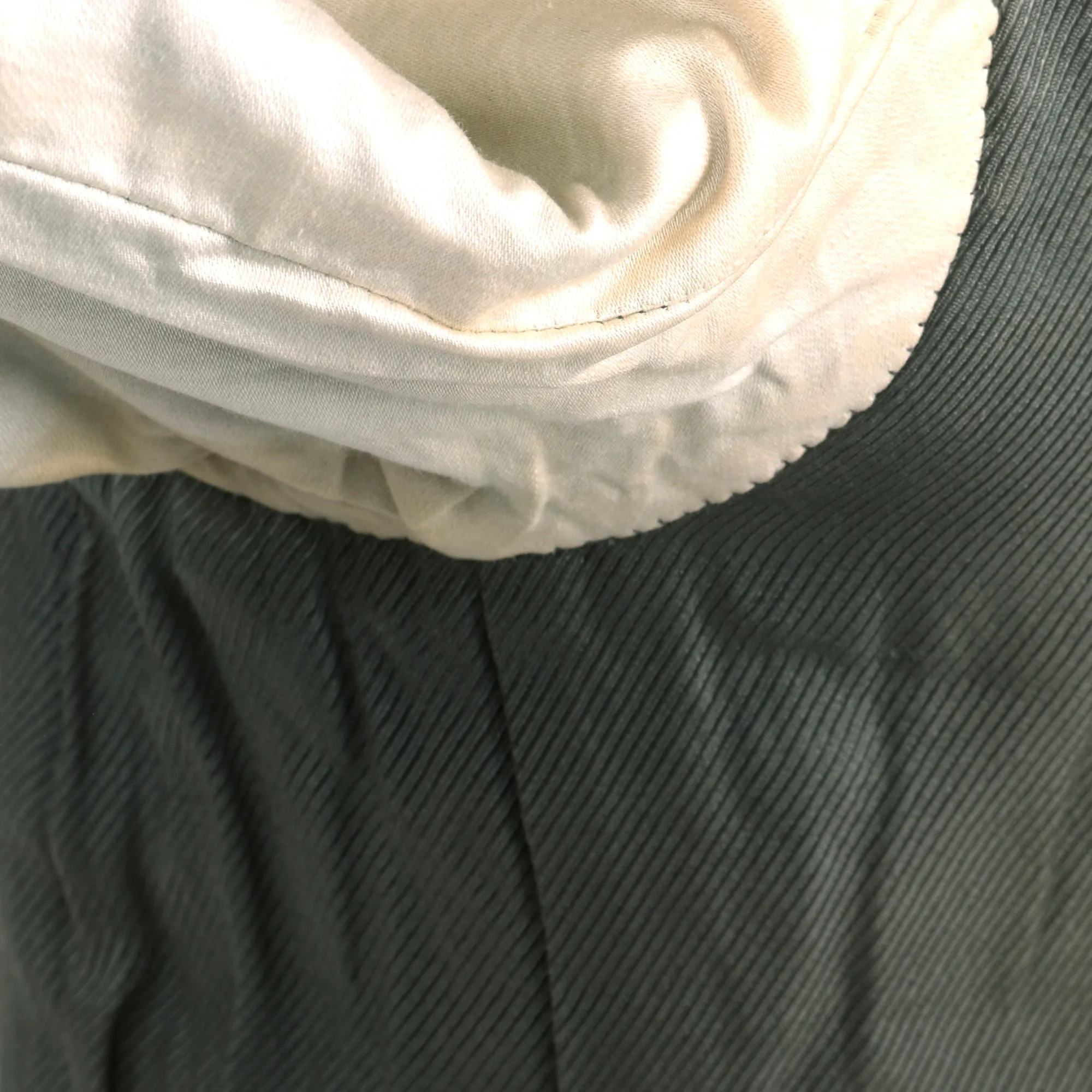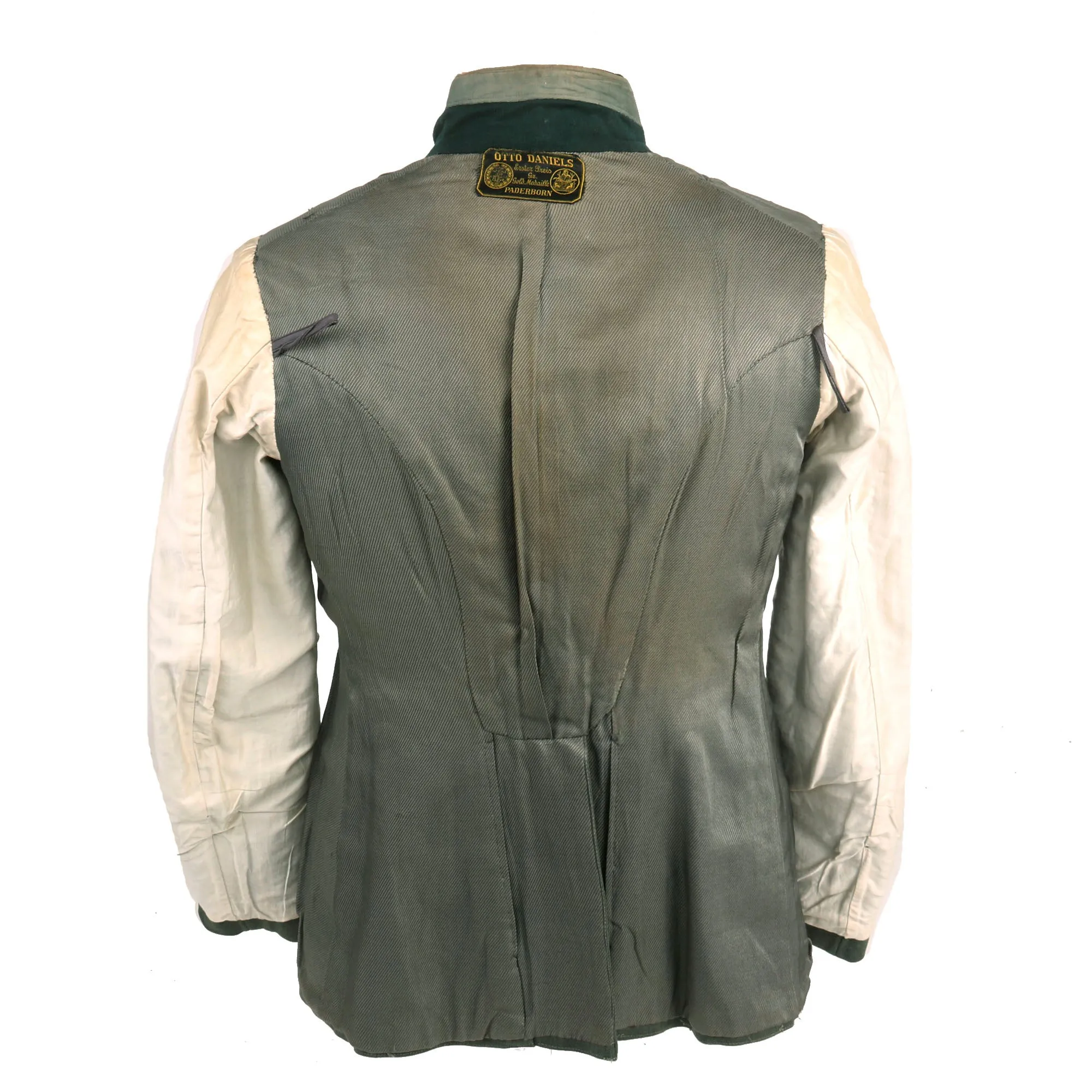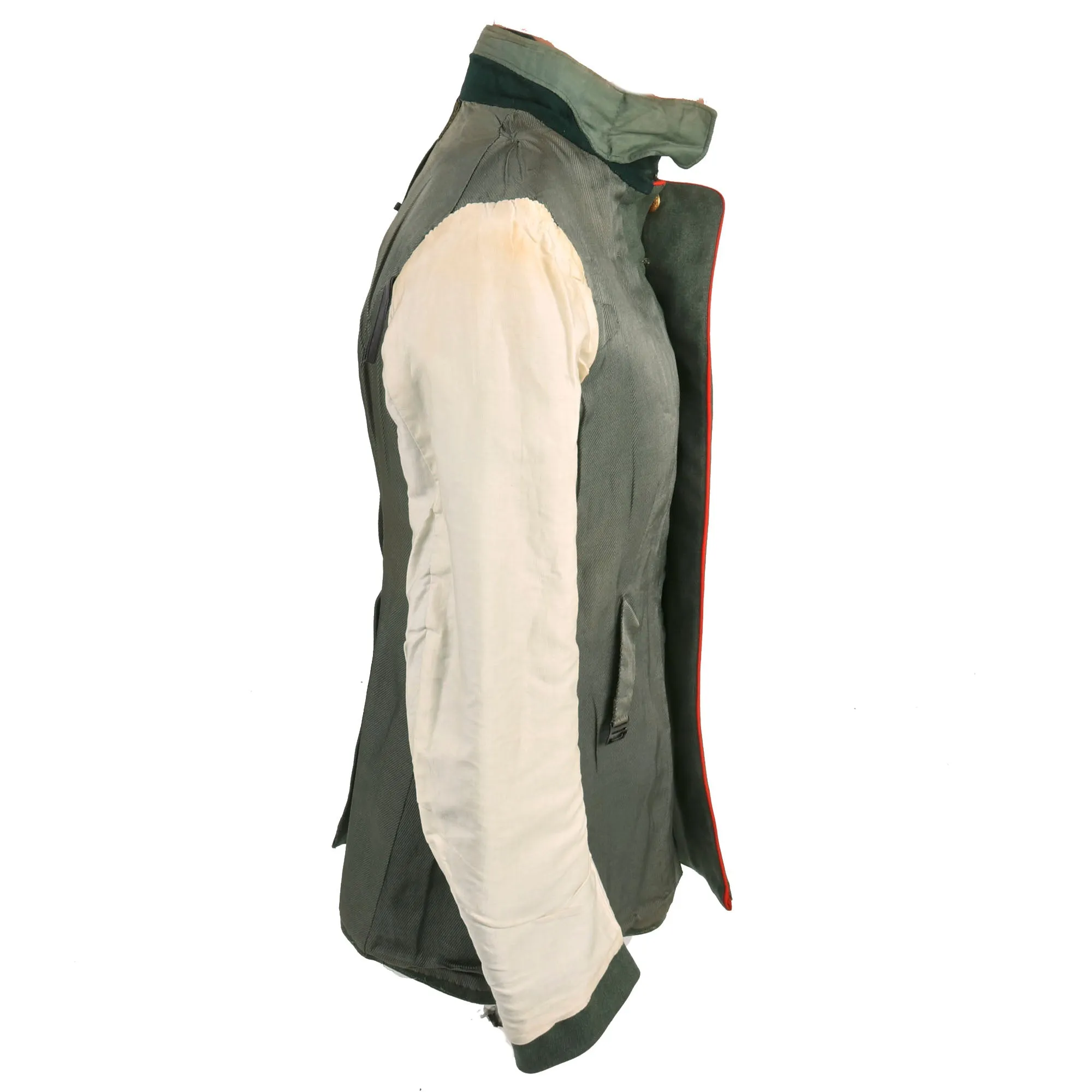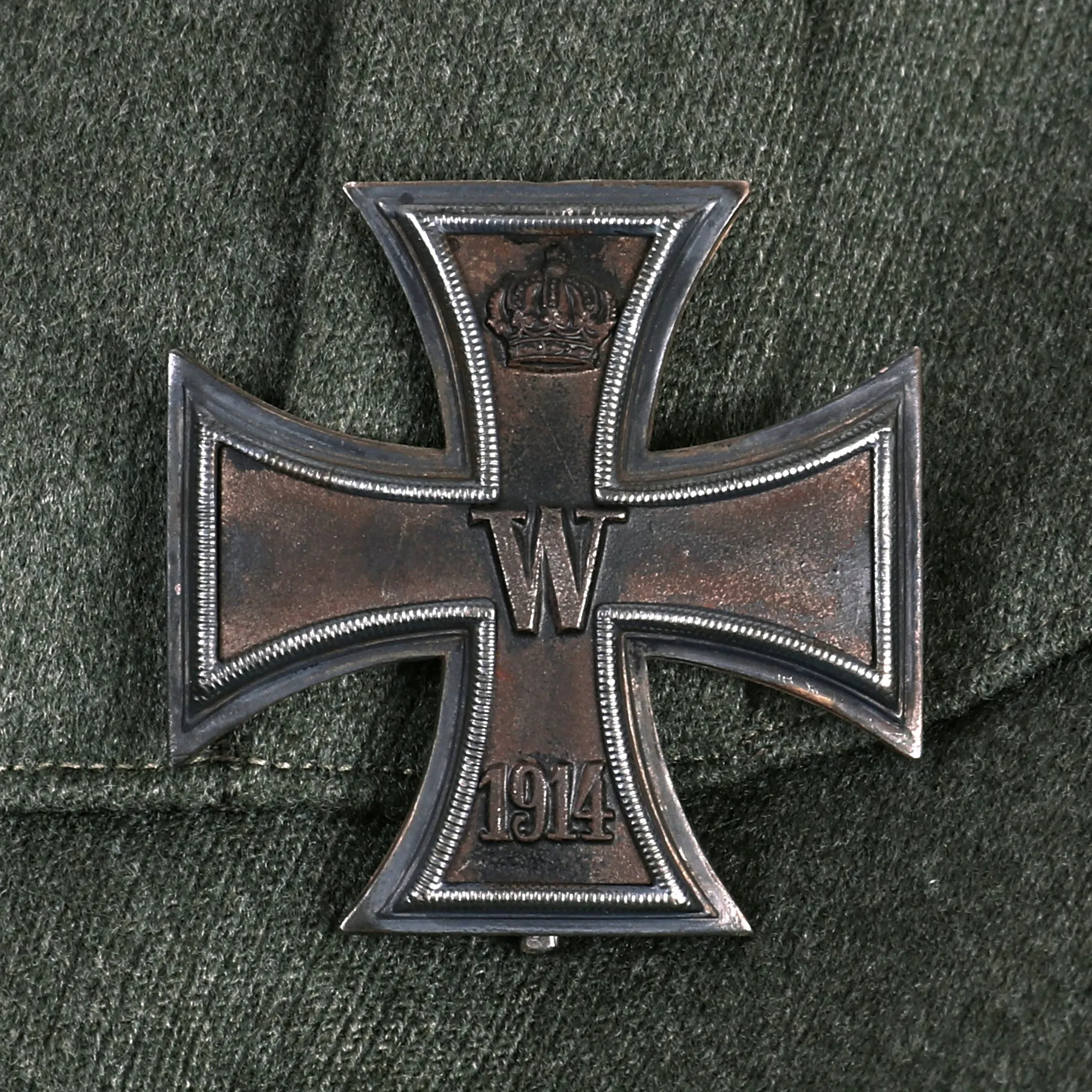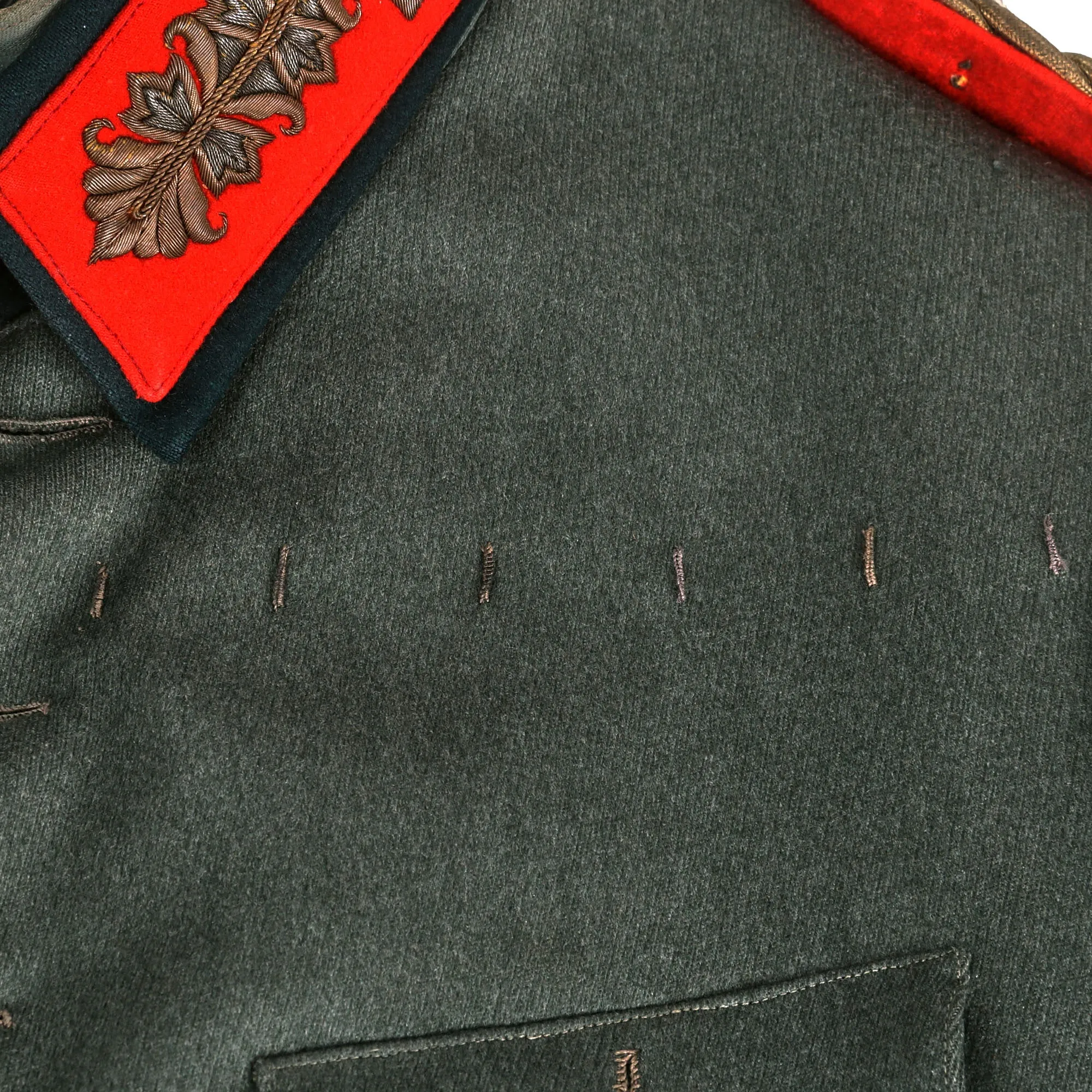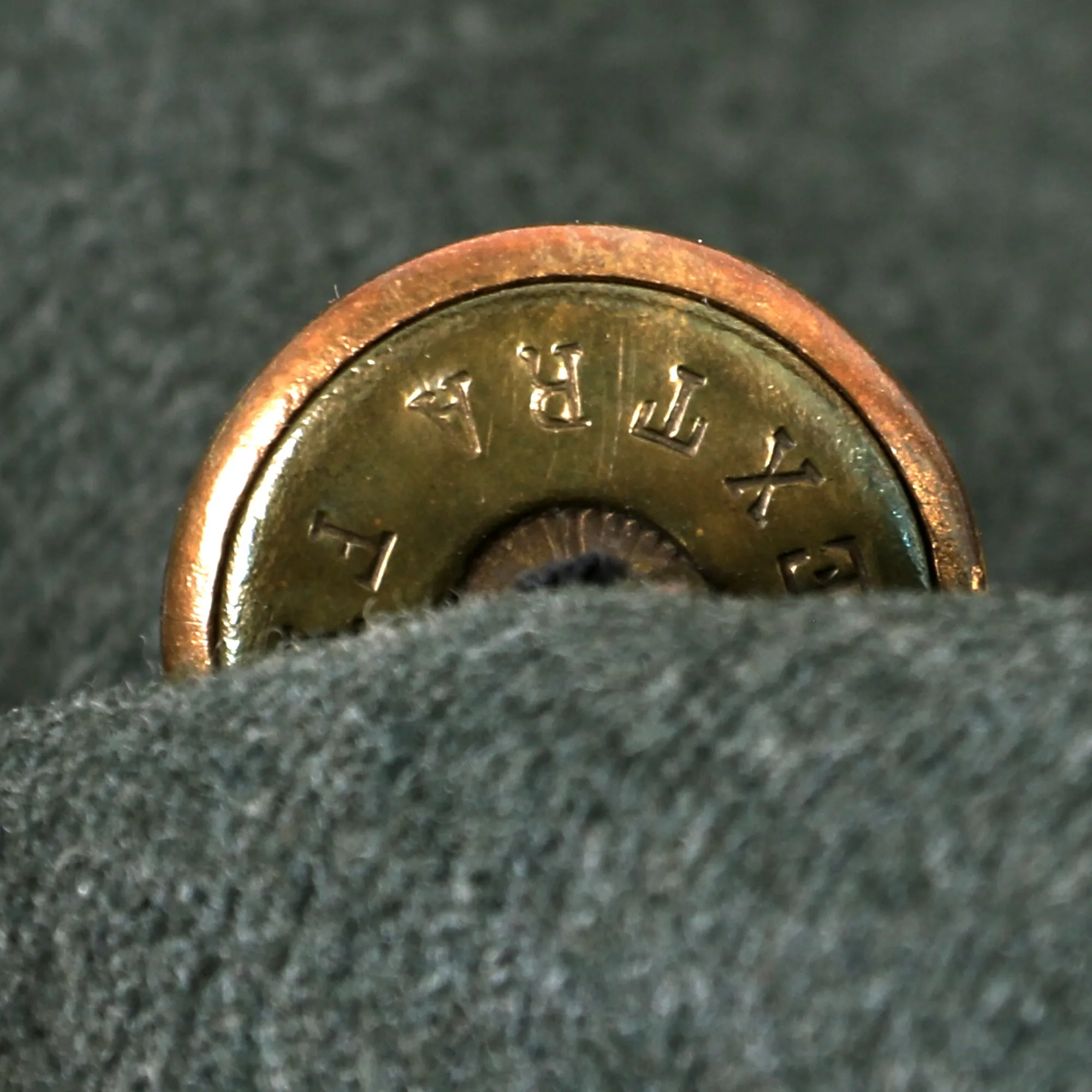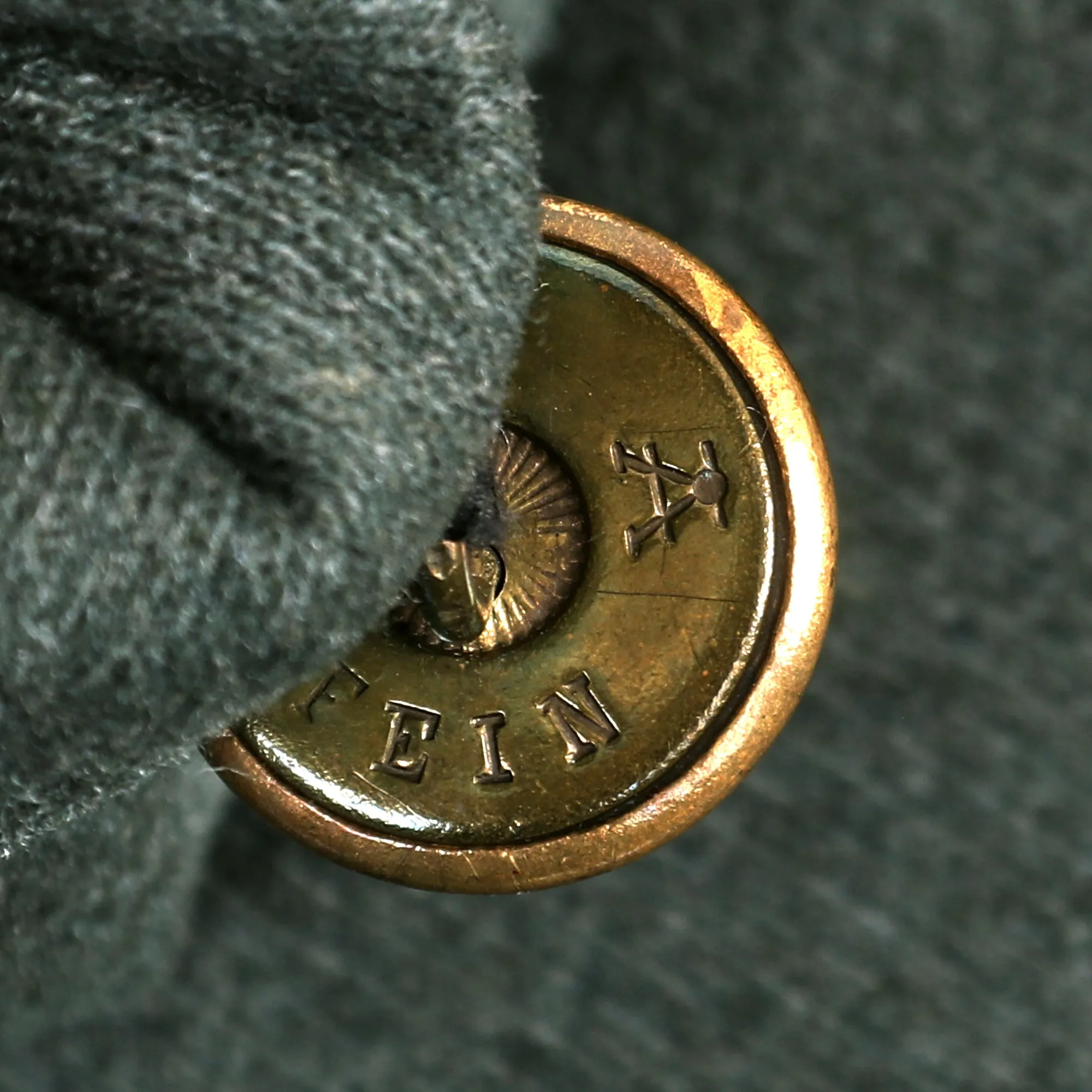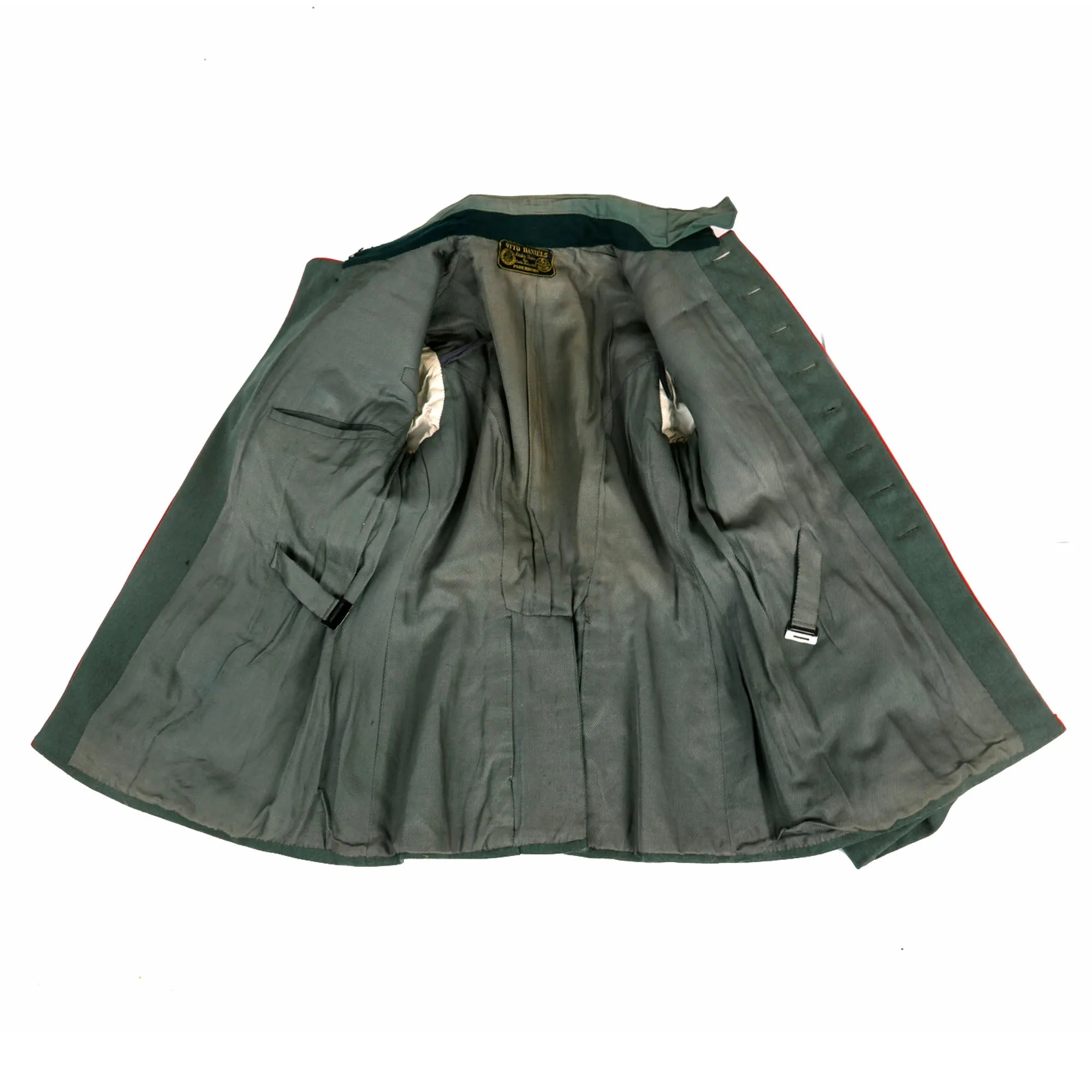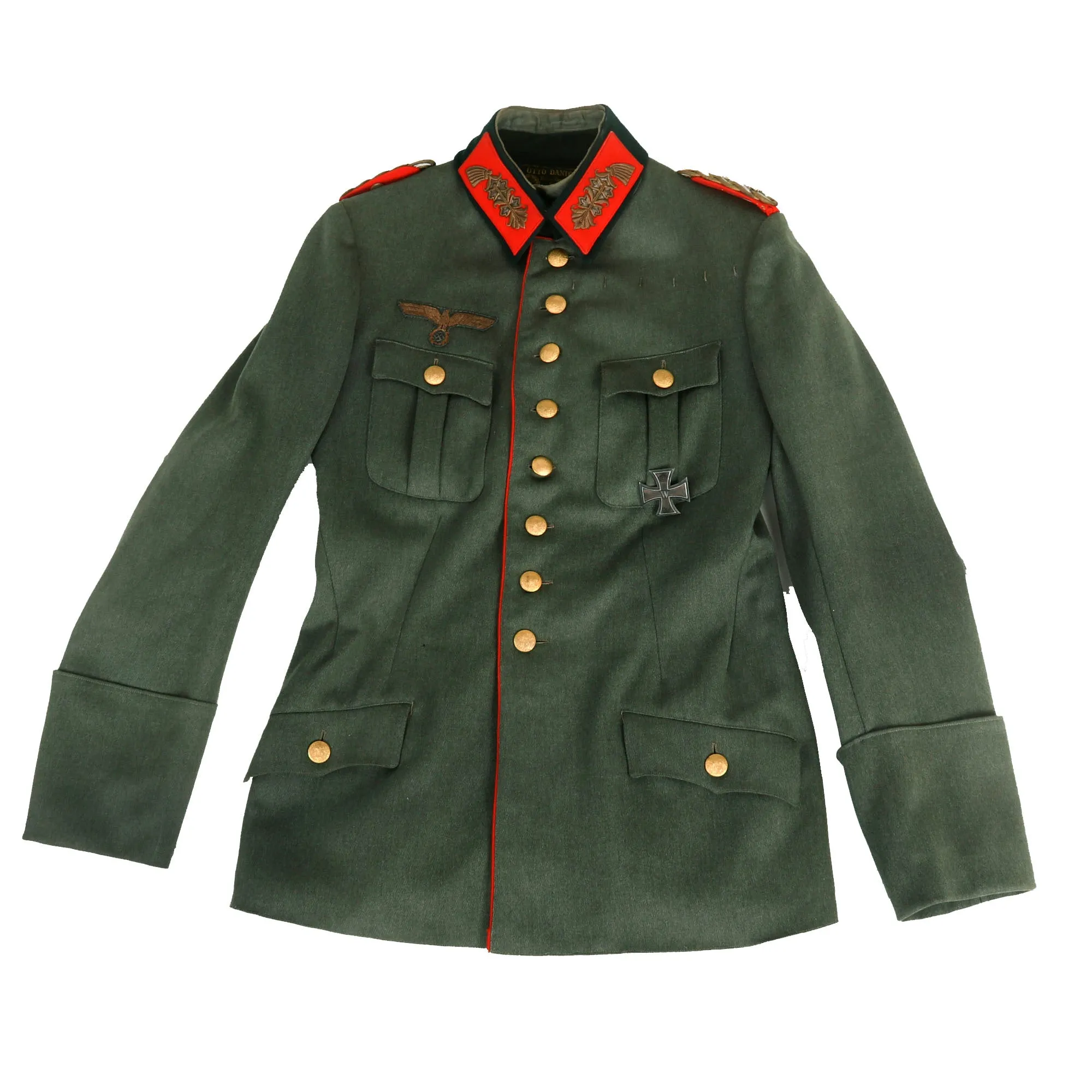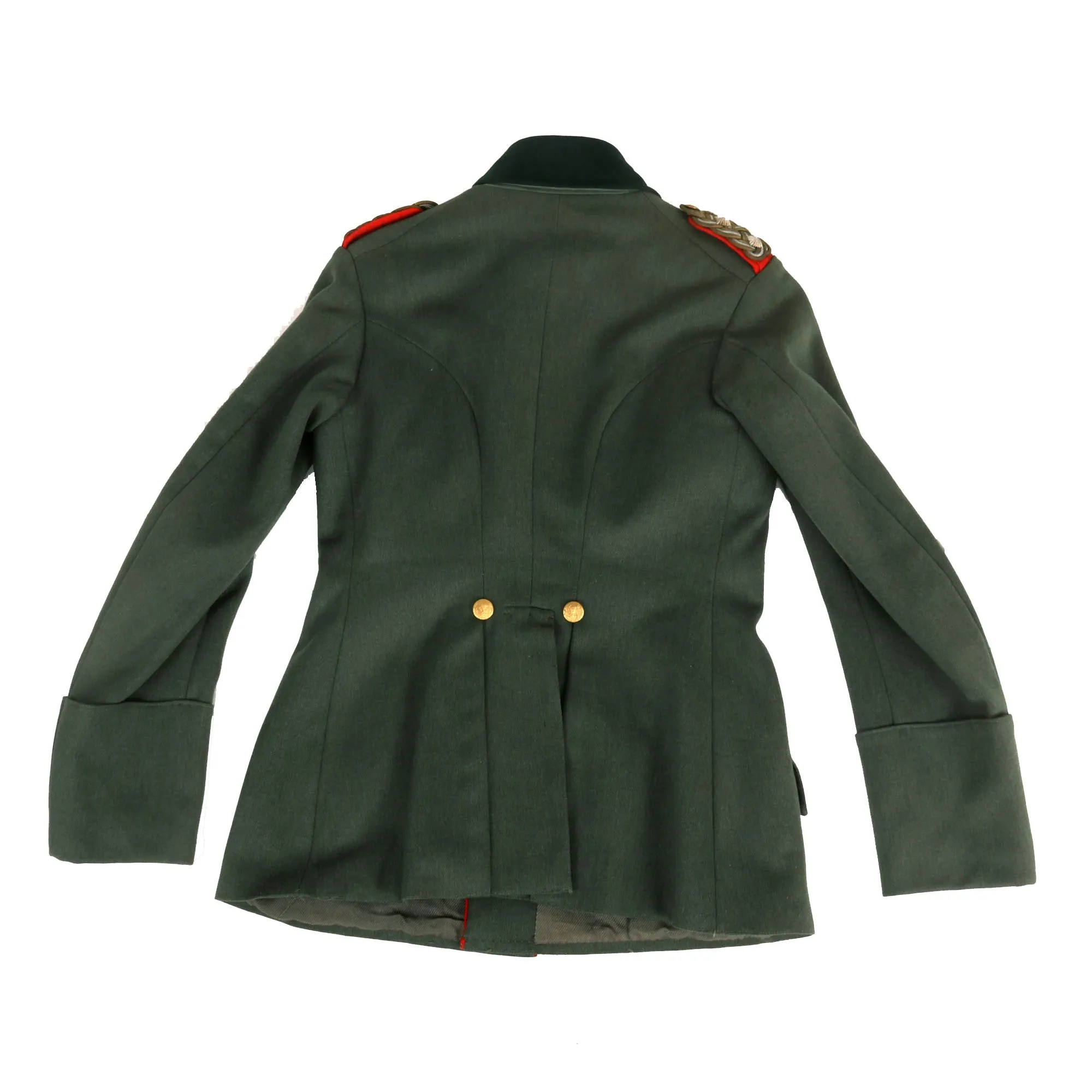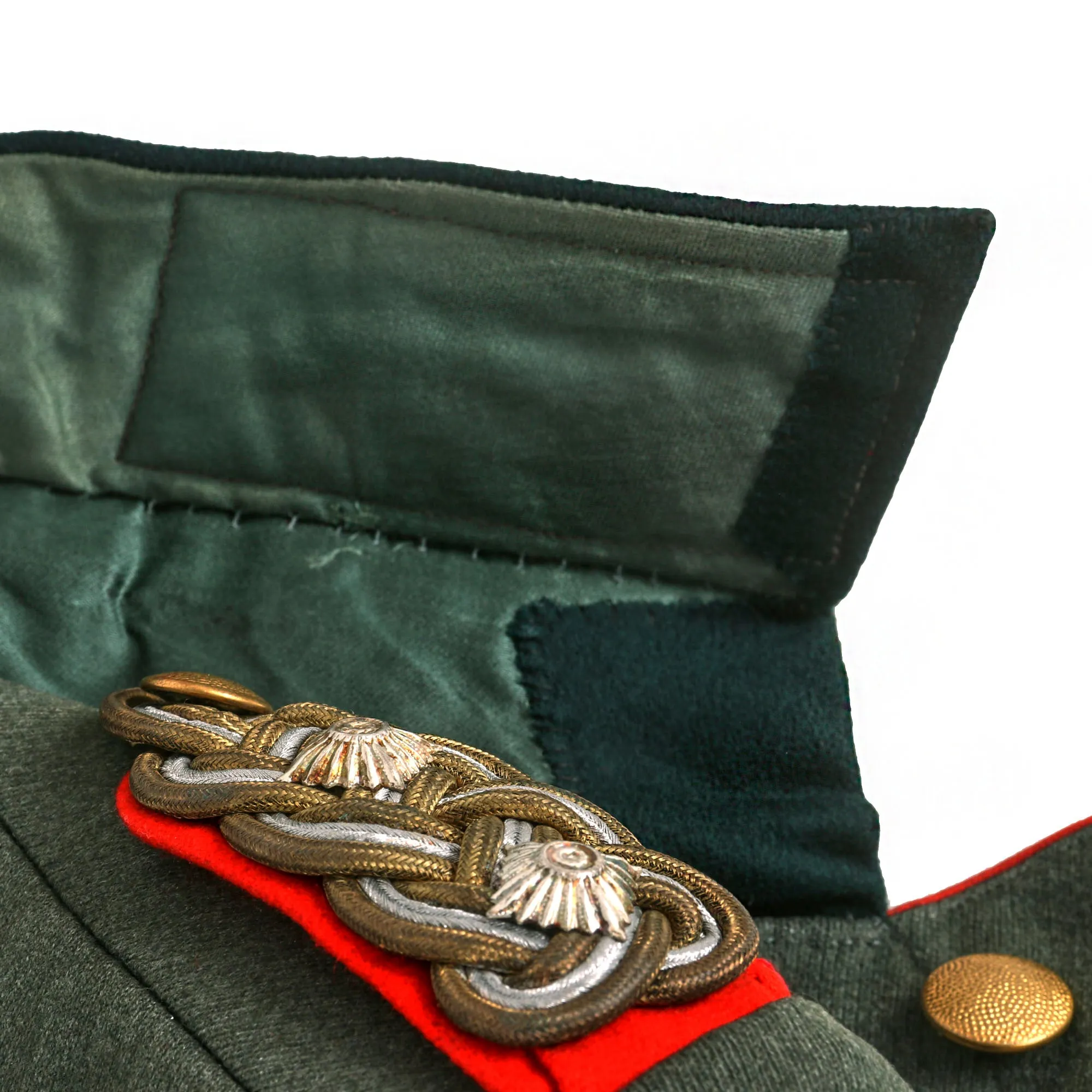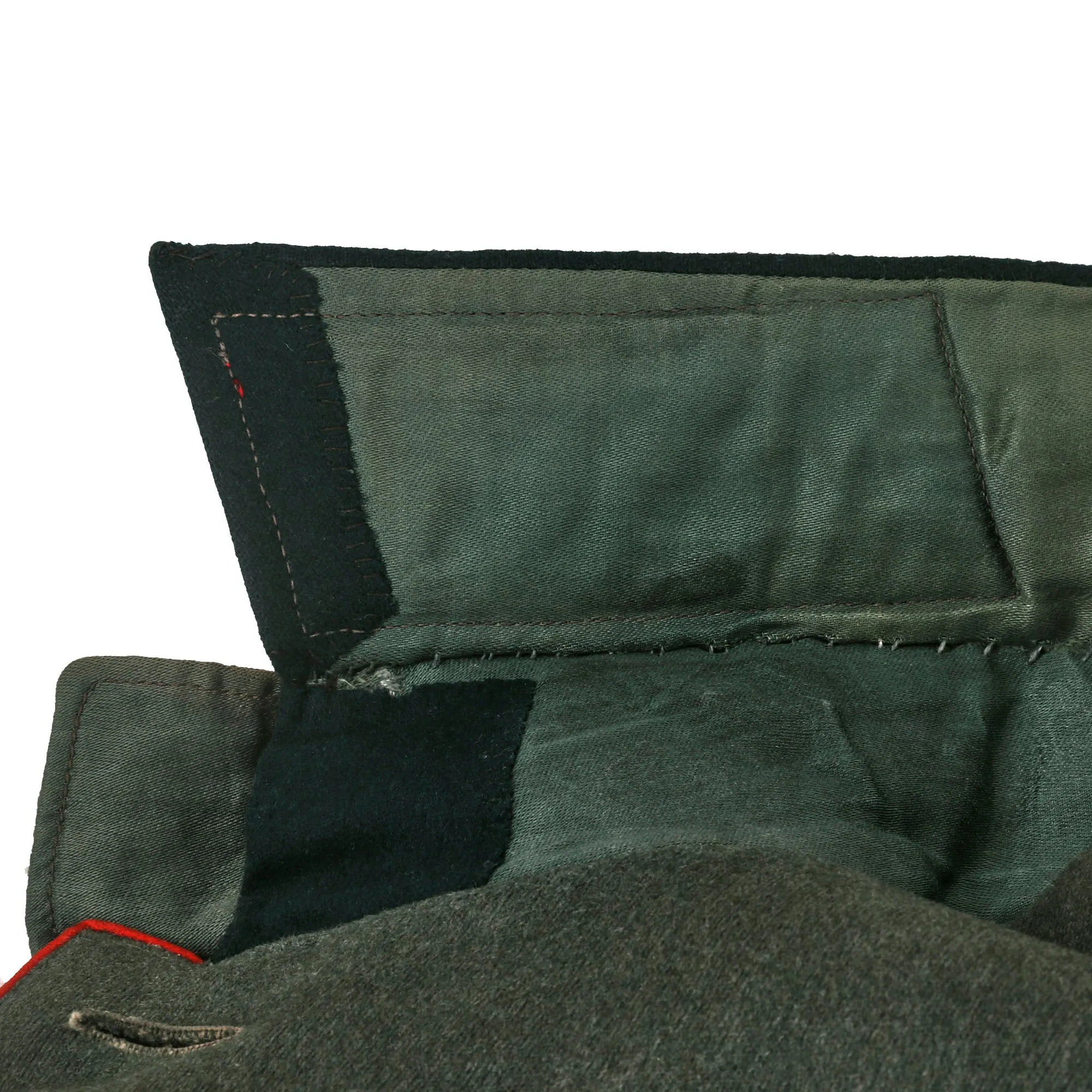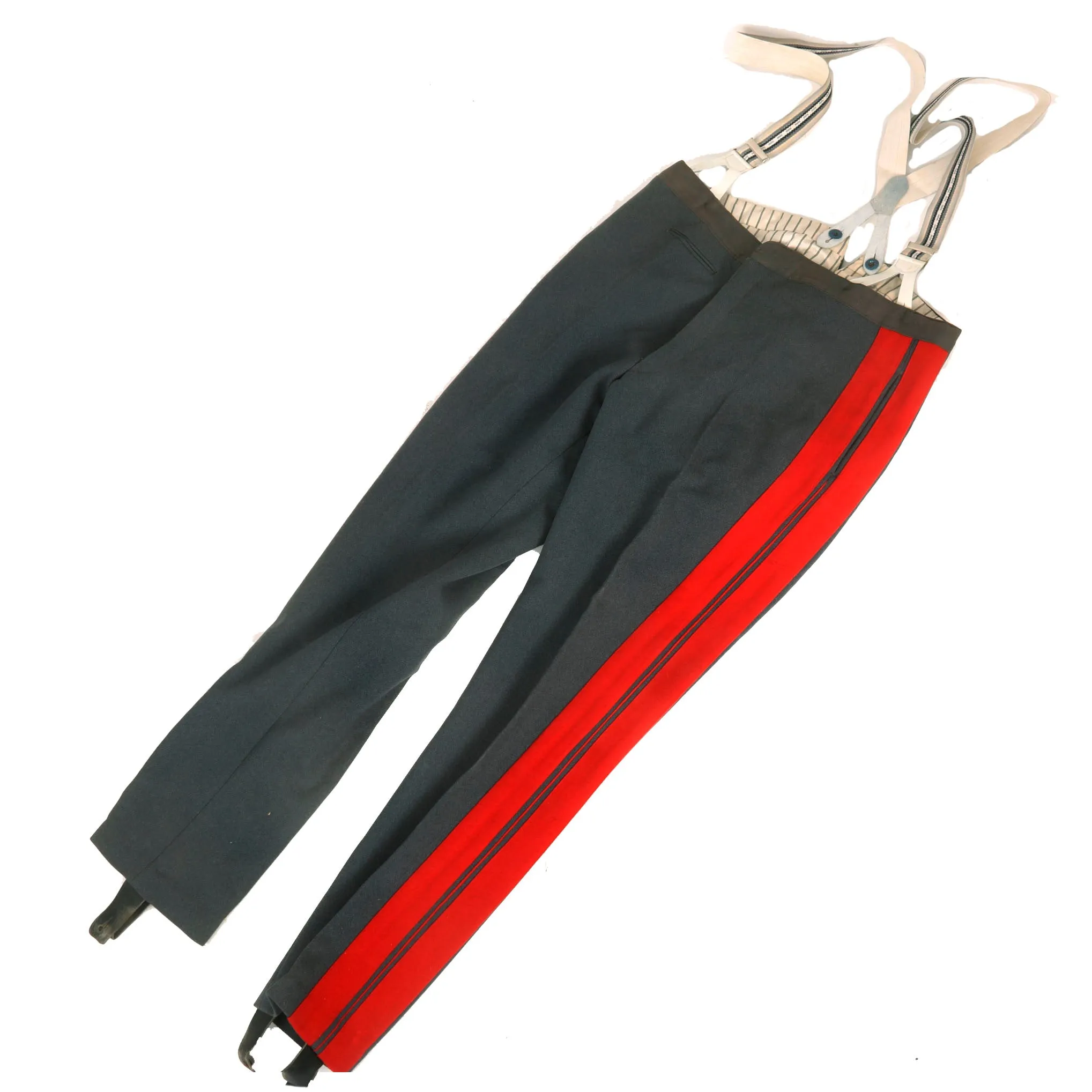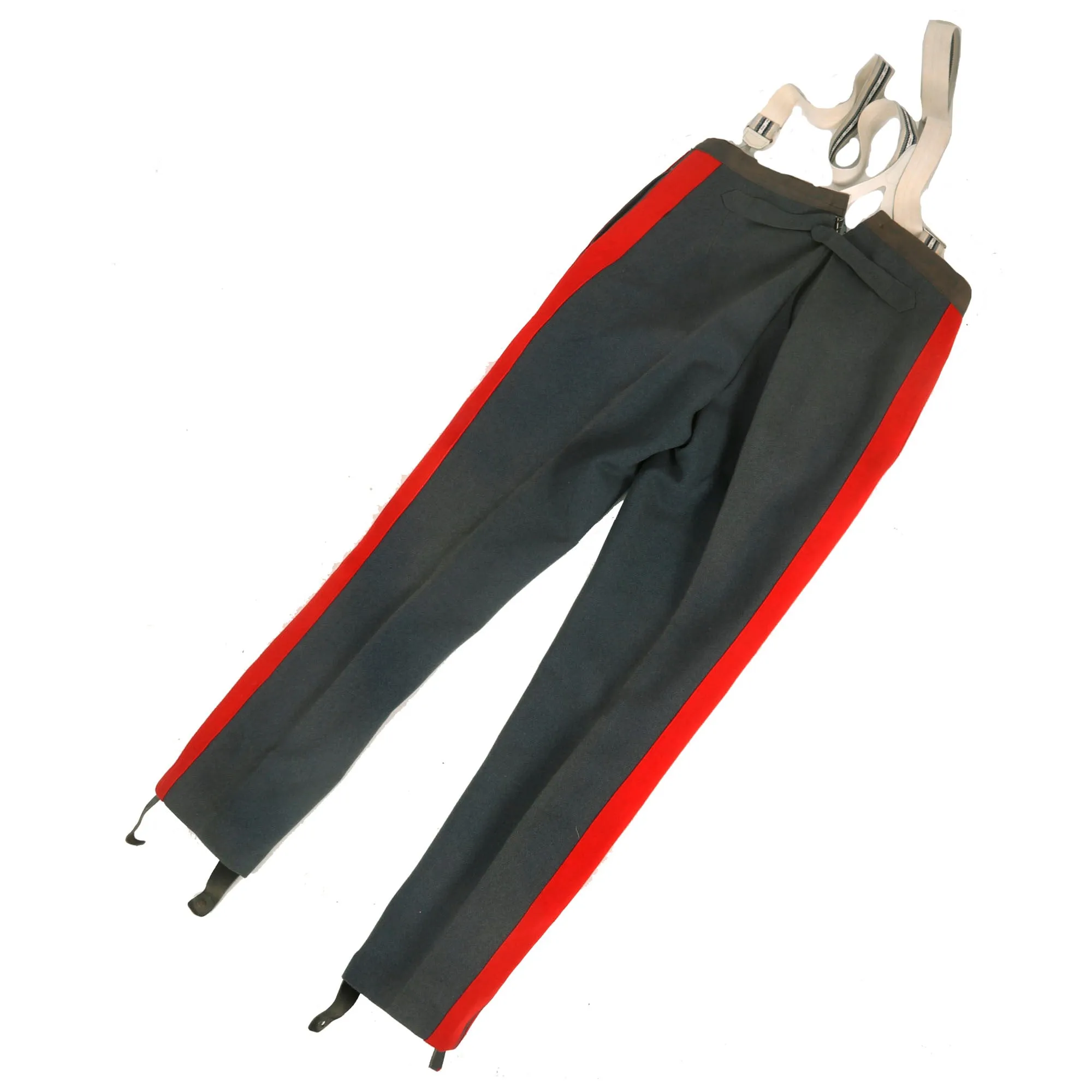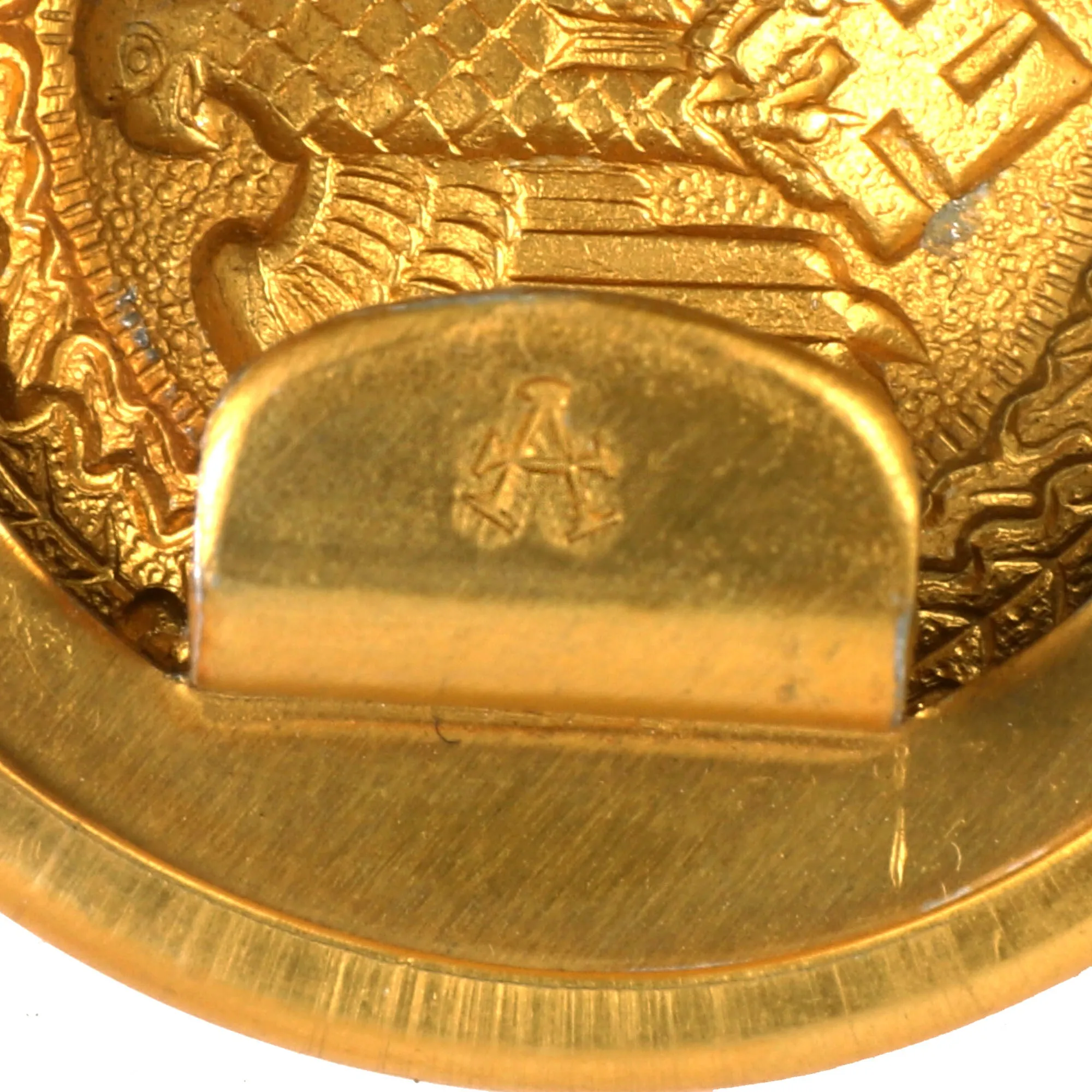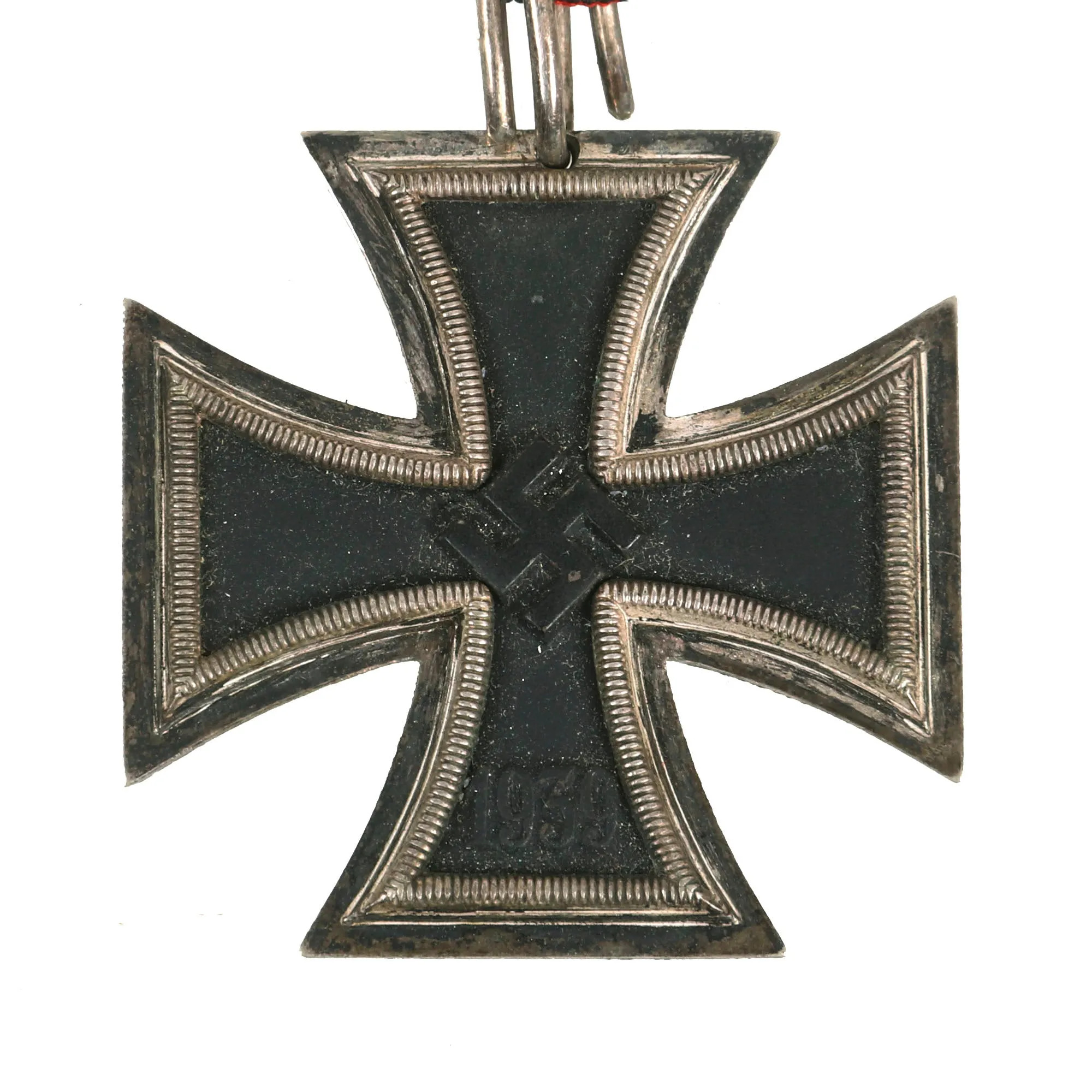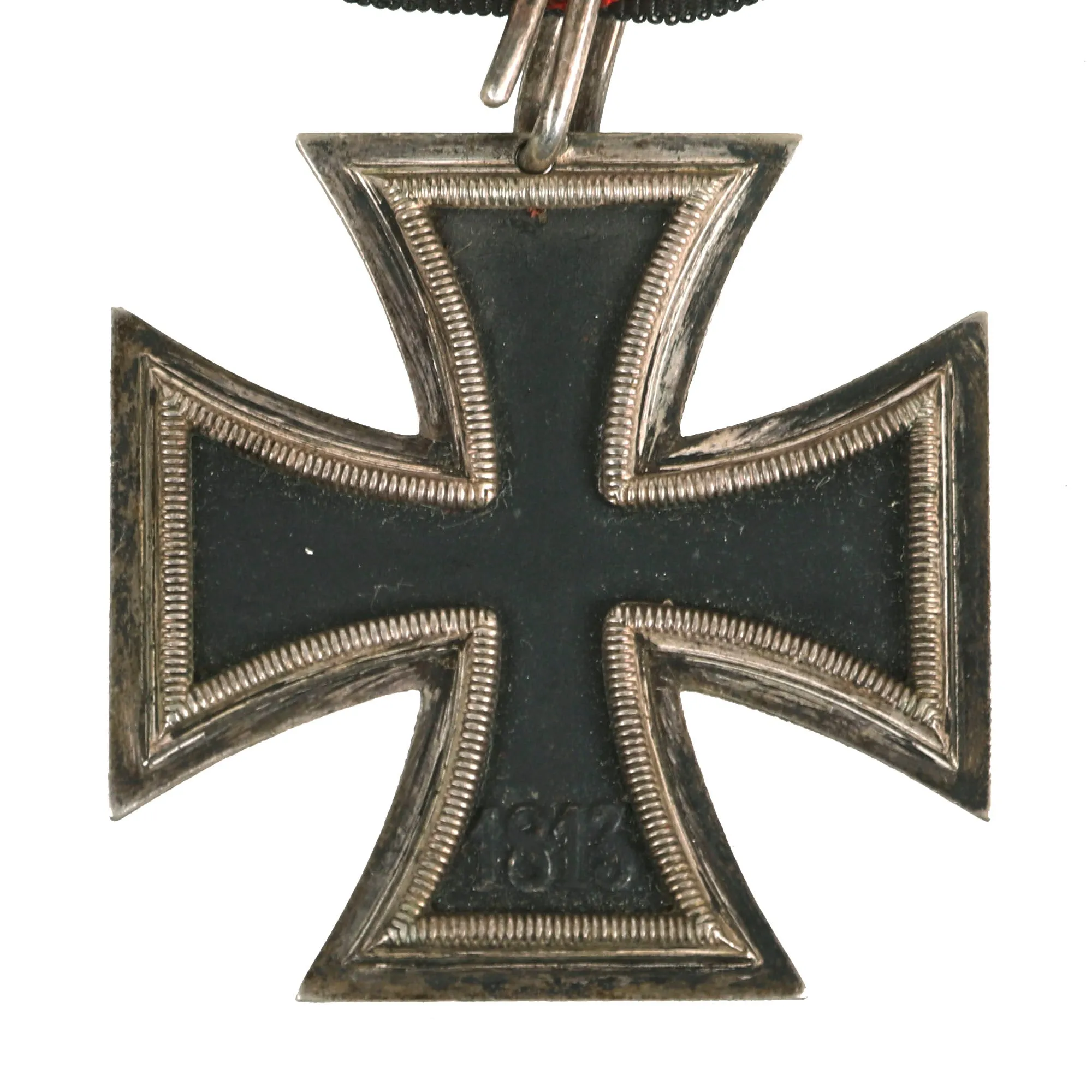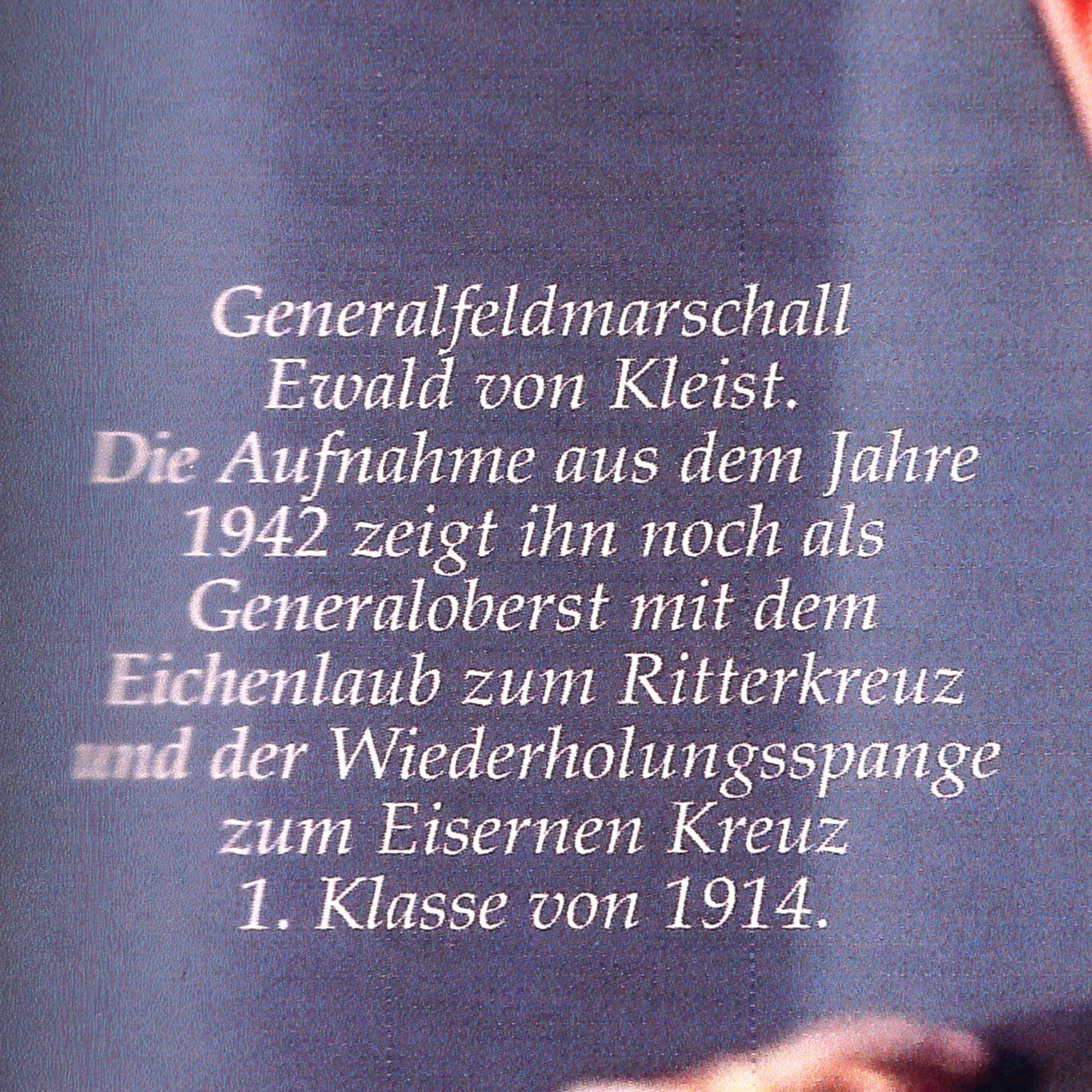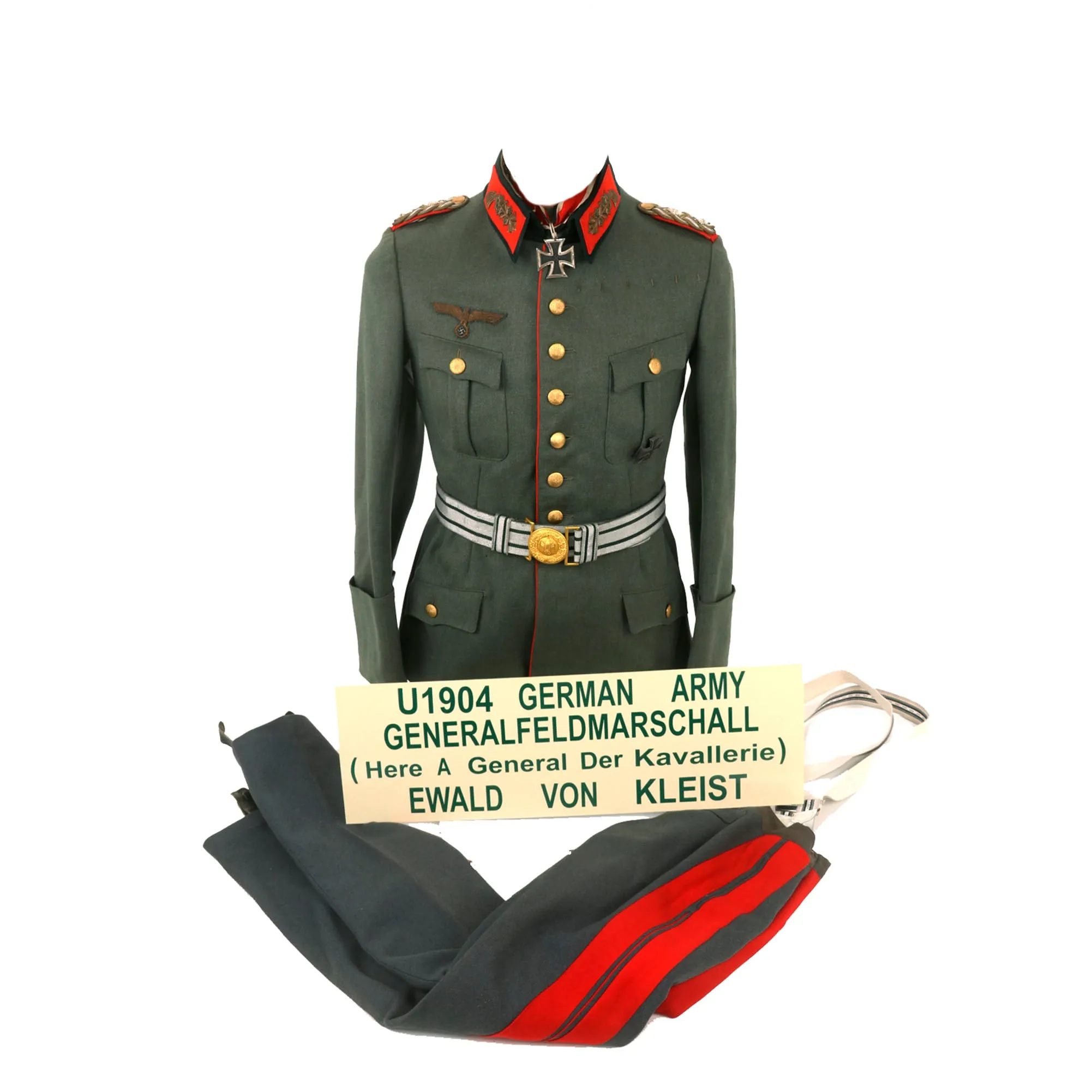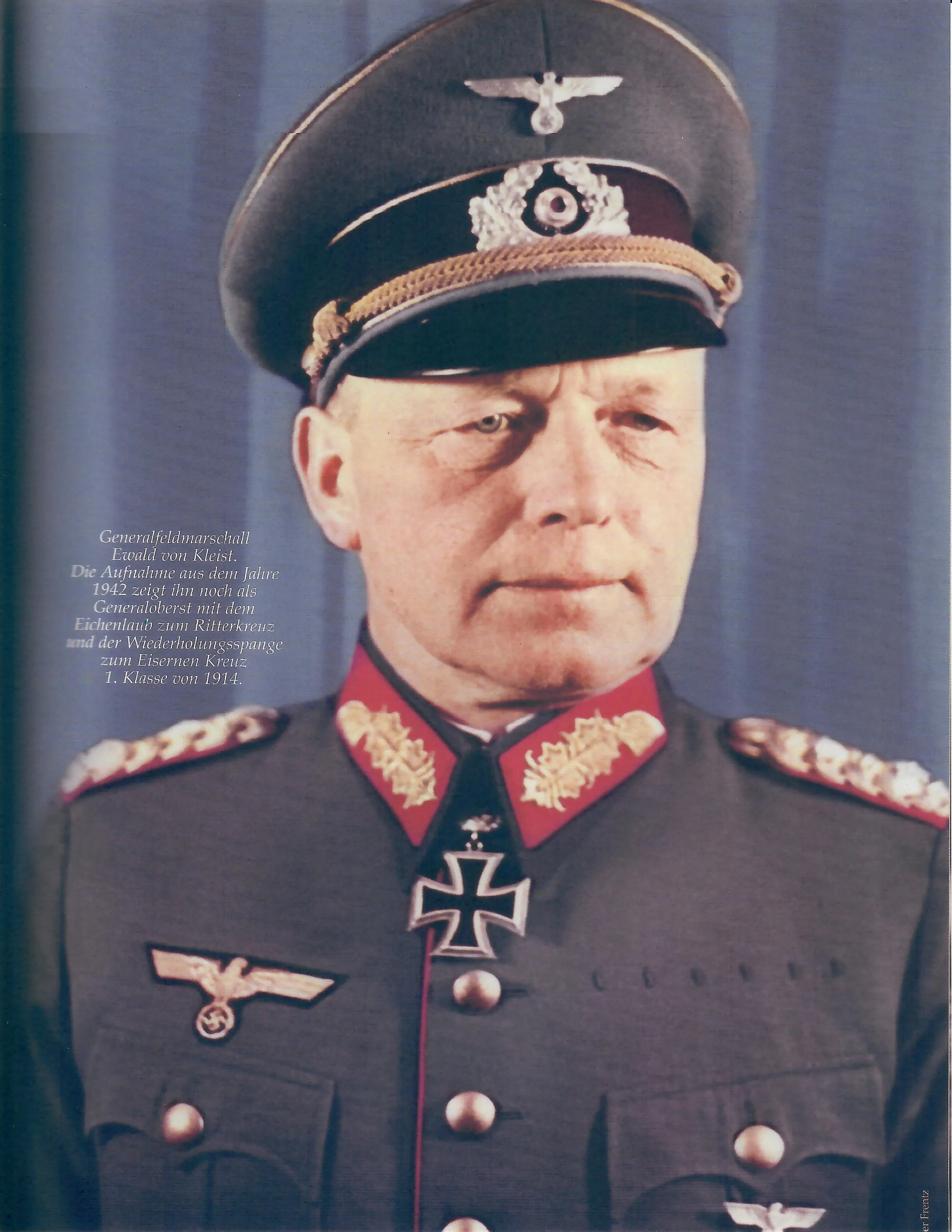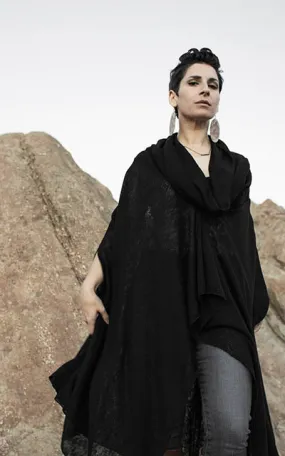Original Items: One-of-a-kind set. Paul Ludwig Ewald von Kleist (8 August 1881 – 13 November 1954), usually shortened to Ewald von Kleist, was a German Generalfeldmarschall in the Heer Army during World War II, who commanded Panzer Group Kleist (originally named the XXII Motorized Corps) and later the 1st Panzer Army during his WWII service. He would later command Army Group A before being forced into retirement in March 1944 after losses on the Eastern Front. Originally a General der Kavallerie (Lt. General) at the beginning of the war, he eventually rose to the rank of Generalfeldmarschall (General of the Army) while commanding Army Group A. He was a recipient of the Knight's Cross of the Iron Cross with Oak Leaves and Swords (Third Degree), as well as many other prestigious awards.
This wonderful German WWII Named Uniform Set came to us from the American Armoured Foundation, Inc. Tank and Ordnance Memorial Museum. The AAF Tank Museum was a living memorial dedicated to the Tank and Cavalry soldiers of the world. Before 1981 some of the artifacts that make up the AAF Tank Museum was a private collection belonging to Mr. William Gasser. Mr. Gasser felt that his collection would be beneficial in educating present and future generations to the sacrifices made and the technologies gained during war. Therefore, in 1981 the AAF Tank Museum was established as a non-profit charitable organization, and Mr. Gasser's donated his private collection to the Tank Museum. Mr. Gasser is still active as Volunteer Director and Curator of the Tank Museum and his knowledge of military history has been a great asset to the museum. Unfortunately after 20 years of operation it had to close its doors, which is when this set was acquired.
Born 8 August 1881, Paul Ludwig Ewald von Kleis was a member of the "House of Kleist", a prestigious old Pomeranian noble family with a long history of military service. There had been two previous Prussian field marshals, numerous generals and Pour le Mérite recipients in the family. At the age of 18, Kleist joined the Prussian field artillery regiment, "General Feldzeugmeister" No. 3 on 9 March 1900 as a fahnenjunker (officer candidate). He was commissioned as a leutnant on 18 August 1901. He became a battalion adjutant in 1904 and regimental adjutant in 1907.
After attending the cavalry school at Hanover from 1908 to 1909, he was promoted to oberleutnant in 1910 and was sent to the prestigious War Academy in Berlin, to undergo general staff training. On 22 March 1914 he was promoted to captain and joined the 1st Life Hussars Regiment (Leib-Husaren-Regiment No. 1). During the First World War, Kleist served on the Eastern Front and commanded a cavalry squadron at the Battle of Tannenberg. From 1915 to 1918 he served as a staff officer of the Guards Cavalry Division on the Western Front.
He would later continue his military service as a member of the Reichswehr under the Weimar republic. He was a career soldier, and continued his service after the NSDAP takeover of Germany. He was well-decorated, and the following is a list of awards we have been able to locate, along with the dates they were bestowed, if available:
● Iron Cross (1914)
- 2nd Class (4 October 1914)
- 1st Class (27 January 1915)
● Hanseatic Cross
● Hindenberg Cross with Swords (for front line combatants)
● Iron Cross (1939)
- 2nd Class (spange - 17 September 1939)
- 1st Class (spange - 27 September 1939)
● Eastern Front Medal (Ostmedaille)
Most notably, he was awarded the Knight's Cross of the Iron Cross on 15 May 1940 as General der Kavallerie and commanding general of XXII. Armeekorps (Later Panzergruppe "Kleist"). This was awarded for the outstanding leadership of his Korps during the Polish campaign. In this time its breakthrough on the southern wing via Tarnow-Tomaszow up until getting to a point east of Lublin was particularly noteworthy. He was the 15th recipient of this award, and received it quite early in the war.
He would subsequently be awarded the Oak Leaves (Eichenlaub) device on 17 February 1942 as a Generaloberst and Commander-in-chief of Panzergruppe 1 (formerly Panzergruppe Kleist). He distinguished himself through the capture of Belgrade on the 12 April 1941, the occupation of the Ukraine and his major contribution towards the encirclement of Soviet forces at Kiev, and was the 72nd person to receive the Oak Leaves.
Later on 30 March 1944 as Generalfeldmarschall and commander of Army Group A, he would be awarded the Swords (Schwertern), the 60th to receive this award, which was the 3rd Degree of the Knight's Cross. Special mention was given for conducting its skillful retreat from the Caucasus as well his performance during the heavy fighting between the Donez, Dnieper and Dniester rivers. This is one of the few times we have items from a recipient of the Ritterkreuz mit Eichenlaub und Schwertern, and items from such individuals are very hard to come by.
It should also be noted that due to his long service he would have qualified for the Wehrmacht Long Service awards, and other awards not listed. There is no medal bar on this uniform, but there are numerous thread loops where it would have been. The uniform is however fitted with a "Field Upgraded" Knight's Cross (an EKII with Ribbon) to take place of the Friedrich order Knight's Cross.
The lovely M36 uniform tunic in this set was is a lovely bespoke example, still bearing the maker tag at the back of the collar, which reads:
OTTO DANIELS
Erster Preis
Gr.
Gold. Medaille
PADERBORN
This uniform tunic was made for von Kleist in March of 1934, when he was a Generalleutnant (Major General) following his promotion on 1 December 1933. It is a lovely bespoke example with a clear maker label inside of the left inside pocket, which reads (handwritten parts italicized):
Otto Daniels Paderborn
-------------------
HERR Gen. Lt. E. v. Kleist
Dadum 3. 3. 1934 No. 76
It is not clear what unit he was commanding at this time, as this was right when the the Reichswehr was united with the newly formed Wehrmacht. In October 1934, he was given command of the "Breslau Army", which was later reorganized into the VIII. Army Corps. When von Kleist was promoted to General der Kavallerie sometime before August of 1936, he would have had to add an additional rank pip to his shoulder insignia, or had them replaced outright. Both of the pips on this example look the same, so we assume he had them replaced.
The tunic is really a great example of a private purchased Wehrmacht Heer Generäle Dienstbluse (General Officer Service Tunic). It is constructed from a fine quality field-gray "whipcord" wool woven exterior, with an olive green cotton-rayon blended interior lining. The sleeves are lined with what looks to be white brushed cotton. The collar is constructed of flaschengrün (dark bottle-green) wool, and is adorned by a set of General grade collar tabs, known as alt-Larisch or Arabesque style, which were used for all General ranks below Feldmarschall. These have the correct red backgrounds with gold bullion embroidery, and the front closure is piped with red as well.
The tunic conforms well to the M36 pattern, even though it predates it, having 2 pleated breast pockets on the front with scalloped flaps, and two waist slash pockets with scalloped flaps. All of the pebbled buttons are the correct gold color for a General officer, and all look to be maker marked on the back.
Each shoulder is decorated with the sew-on style General der Kavallerie rank shoulder boards. They are both constructed out of a row of interwoven silver and gold bullion strands in the typical Russian braid style in an interlocking weave pattern ending at a pebbled gilt metal (magnetic) button. There are two rank pips installed, correct for a General der Kavallerie and other specialized General ranks equivalent to a U.S. Army Lt. General.
On the right breast is a fine quality gold bullion eagle, constructed of rolled, twisted, and flat hand embroidered gilt stitching with gold cotton retaining threads, placed onto a dark bottle green wool backing. It is neatly stitched to the outer layer of fabric, which is still bright and shiny. Really a lovely looking tunic, showing just a bit of wear. There is a vaulted Iron Cross first class 1914 on the bottom of the left breast pocket, and there are numerous thread loops above for what would have been an enormous medal bar.
Secured around the tunic as shown in the photograph is a lovely German WWII Heer Army General's Dress Brocade Belt with Buckle by F. W. Assmann & Söhne of Lüdenscheid. The belt is in excellent condition, and has the correct gold washed buckle and end clip, which is sewn on, so it was definitely made as a generals belt.
Along with the tunic and belt there is a lovely pair of General's trousers in the correct stone gray (steingrau) color, with red stripes on the side, which comes with the correct suspenders. They are in very good shape, and definitely period correct.
Along with the uniform are some great additional items that really flesh out this fantastic set, and add lots of wonderful research and display potential. These include:
● The original information / inventory listing from the A.A.F. Tank Museum, which gives a very detailed history of von Kleist's military progression during the interwar years and during the war.
● The original painted metal display placard used when the uniform was owned and displayed by the A.A.F. Tank Museum.
● A printed out photograph from a German book or newspaper, showing a picture of von Kleist in 1942, when he was a Generaloberst and recipient of the Knight's Cross with Oak Leaves.
We very seldom get uniform sets with such great provenance and research potential. This could become the centerpiece of your WWII collection. Ready to research and display!
Approximate Measurements:
Collar to shoulder: 9"
Shoulder to sleeve: 26”
Shoulder to shoulder: 15”
Chest width: 18.5"
Waist width: 16.5"
Hip width: 20.5"
Front length: 30"
Pants:
Waist: 16.5"
Inseam: 31"
More Information on Paul Ludwig Ewald von Kleist:
Paul Ludwig Ewald von Kleist (8 August 1881 – 13 November 1954) was a German Generalfeldmarschall (Field Marshal) of the Wehrmacht during World War II. Born into the Prussian noble family von Kleist, Kleist entered the Prussian Army in 1900 and commanded a cavalry squadron during World War I. Kleist joined the Reichswehr of inter-war Germany before being discharged in 1938.
Recalled to active duty at the beginning of World War II, Kleist commanded a motorised corps in the Invasion of Poland. He then became the commander of Panzer Group Kleist (later 1st Panzer Army), the first operational formation of several Panzer corps in the Wehrmacht during the Battle of France, the Battle of Belgium, the Invasion of Yugoslavia and Operation Barbarossa, the invasion of the Soviet Union.
During the Battle of France, units under Kleist's command included Heinz Guderian's armoured corps and spearheaded the "blitzkrieg" attack through the Ardennes forest, outflanking the Maginot Line. His panzer divisions eventually pushed deep into France, resulting in Allied defeat. He then commanded the 1st Panzer Army as it drove deep into Ukraine and the Caucasus during Operation Barbarossa.
Kleist was appointed commander-in-chief of Army Group A during the last days of Case Blue, the 1942 German summer offensive in southern Russia. His disagreements with Adolf H over strategic decisions led to his dismissal in March 1944 after the German defeat in right-bank Ukraine.
Following the war, Kleist was extradited to the Soviet Union where he was sentenced to 25 years in prison for war crimes; he died in prison.
More on German Uniform Tunics
Terms such as M40 and M43 were never designated by the Wehrmacht, but are names given to the different versions of the Model 1936 field tunic by modern collectors, to discern between variations, as the M36 was steadily simplified and tweaked due to production time problems and combat experience.
Field Tunic (Feldbluse) Model 1936
When the NSDAP came to power in early 1933 the Reichswehr, the armed forces of the Weimar Republic, were near the end of a two-year project to redesign the Army Feldbluse (field-blouse). Beginning in that year the new tunic was issued to the Reichsheer and then the rapidly growing Wehrmacht Heer, although minor design changes continued to be made until the appearance of the standardized Heeres Dienstanzug Modell 1936. The M36 tunic still retained the traditional Imperial and Reichswehr uniform color of grey-green "field gray" (feldgrau) wool, but incorporated four front patch pockets with scalloped flaps and pleats (on Reichswehr tunics the lower pockets were internal and angled). The front was closed with five buttons rather than the previous eight, and the collar and shoulder straps were of a dark bottle-green instead of the Reichswehr grey. Compared to the Weimar-era uniforms the skirt of the feldbluse was shorter and the tailoring was more form-fitting due to Germany's adoption of mechanized warfare: soldiers now spent much time in the confined space of a vehicle and a shorter jacket was less likely to pick up dirt from the seats. It also included an internal suspension system, whereby a soldier could hang an equipment belt on a series of hooks outside of the tunic. These hooks were connected to two straps inside the lining, which spread the weight of equipment without having to use external equipment suspenders. The M36 was produced and issued until the very end of the war, though successive patterns became predominant.




